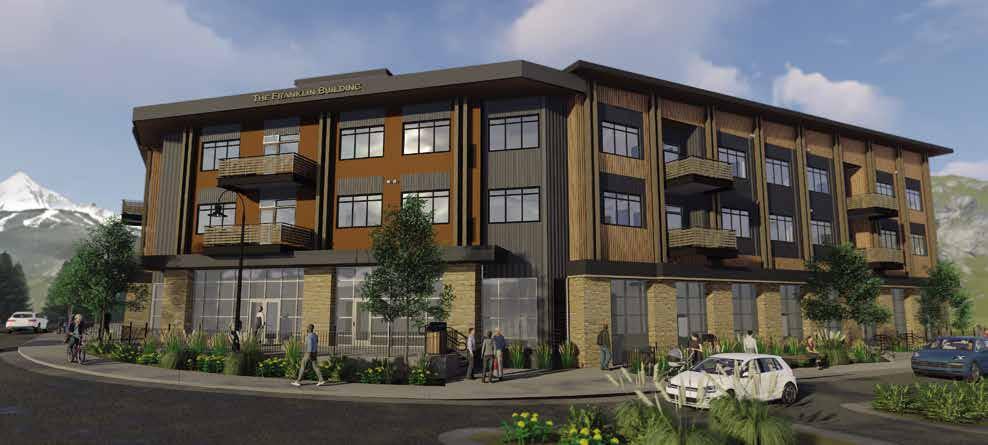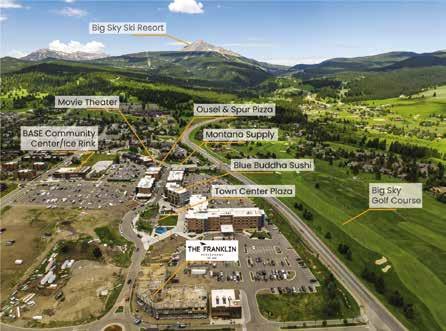October 5 - 18 , 2023


October 5 - 18 , 2023

GRAVEL PIT PROPOSAL STIRS
GALLATIN GATEWAY
Q&A WITH RYAN BUSSE

REPORT OUTLINES SOLUTIONS FOR WILDLIFE AND DRIVERS ON 191
CRAZY MOUNTAIN LAND SWAP NEARS



USFS APPROVAL

October 5 - 18, 2023
Volume 14, Issue No. 20
Owned and published in Big Sky, Montana PUBLISHER
Eric Ladd | eric@theoutlawpartners.com
EDITORIAL
VP MEDIA
Mira Brody | mira@theoutlawpartners.com
ASSOCIATE EDITOR
Jack Reaney | jack@theoutlawpartners.com
EDITORIAL CONSULTANT
Leslie Kilgore | leslie@theoutlawpartners.com
DIGITAL PRODUCER
Jen Clancey | jen@theoutlawpartners.com
CREATIVE
LEAD GRAPHIC DESIGNER
ME BROWN | maryelizabeth@theoutlawpartners.com
SALES AND OPERATIONS
CHIEF MARKETING OFFICER
Megan Paulson | megan@theoutlawpartners.com
CHIEF FINANCIAL OFFICER
Treston Wold | treston@theoutlawpartners.com
VP DESIGN & PRODUCTION
Hiller Higman | hiller@theoutlawpartners.com
DIRECTOR OF RELATIONSHIPS
Ersin Ozer | ersin@theoutlawpartners.com
MARKETING MANAGER
Tucker Harris | tucker@theoutlawpartners.com
SENIOR ACCOUNTANT
Sara Sipe | sara@theoutlawpartners.com
BUSINESS DEVELOPMENT LEAD
Patrick Mahoney | patrick@theoutlawpartners.com
Left to right: Astrid McGuire, Ella Meredith, Juliusz Shipman and Cash Beattie—just four of Lone Peak High School’s 20 senior athletes among numerous varsity captains for the fall 2023 season. As September came to a close, all four Big Horn varsity teams played homecoming games in Big Sky. Each team’s score was different, as are their playoff hopes. The most important outcome was the home crowd support from Big Horn faithful, reminding the hardworking high school athletes of their importance to the Big Sky community, win or lose. PHOTO BY JACK REANEY
In a fall tradition shared by Big Sky families and Lone Peak High School athletics, all four varsity teams hosted contests in Big Sky during the last weekend of September. The soccer teams hosted Laurel High School on Sept. 28 with a boys win and girls tie, and the football team beat Choteau High School the following night. On Sept. 30, the volleyball team held their own against a top-ranked squad from Townsend. EBS spoke with players and coaches after the games.
Sitting at the fulcrum of Bozeman and Big Sky’s unyielding growth, Gallatin Gateway, an unincorporated community of just over 800, is grappling with the proposal of a 130-acre gravel pit that would sit a mile from the community’s center. The proposal sparked local outcry from the Gateway Conservation Alliance and neighbors. EBS caught up with stakeholders on both sides of the Gallatin County controversy.
In a long-awaited report on a multi-year study of wildlife habitat connectivity across U.S. Highway 191 between Four Corners and West Yellowstone, a diverse team of experts outlined possible solutions to vehicle-wildlife collisions that have threatened human safety and impacted wildlife migration patterns and success. The report outlines 11 solutions for the next decade that could allow animals to safely cross the busy highway—including Montana Highway 64 in Big Sky.
In late September, the U.S. Forest Service released a draft decision notice announcing it planned to move forward with a modified version of a proposed land swap involving checkered land in the Crazy Mountains, and Inspiration Divide near Big Sky. In addition to the Forest Service, the transaction would involve five landowners in the Crazy Mountains, and the Yellowstone Club. The Forest Service will receive 6,110 acres and transfer 3,855 national forest acres to private ownership.

Daniel Bierschwale, Bayard Black, Kaley Burns, Mario Carr, Amanda Eggert, Rachel Hergett, Benjamin Alva Polley, Michael Ruebusch, Paul Swenson.
EDITORIAL POLICY
Outlaw Partners, LLC is the sole owner of Explore Big Sky. EBS reserves the right to edit all submitted material. Printed material reflects the opinion of the author and is not necessarily the opinion of Outlaw Partners or its editors. EBS will not publish anything discriminatory or in bad taste.
EBS welcomes obituaries written by family members or from funeral homes. To place an obituary, please submit 500 words or less to media@theoutlawpartners.com.
In early September, Ryan Busse, a democrat, announced his bid to run for Montana governor in 2024. Busse spoke in an exclusive interview with EBS about his background, his experience in politics, his views on the firearms industry, housing and other challenges facing Montana, as well as his leadership values.
LETTERS TO THE EDITOR
Letters to the editor allow EBS readers to express views and share how they would like to effect change. These are not Thank You notes. Letters should be 250 words or less, respectful, ethical, accurate, and proofread for grammar and content. We reserve the right to edit letters and will not publish individual grievances about specific businesses or letters that are abusive, malicious or potentially libelous. Include: full name, address, phone number and title. Submit to media@outlaw.partners.
ADVERTISING DEADLINE
For the October 19th October 11th, 2023
CORRECTIONS
Please report errors to media@outlaw.partners.
OUTLAW PARTNERS & EXPLORE BIG SKY P.O. Box 160250, Big Sky, MT 59716 (406) 995-2055 • media@theoutlawpartners.com
© 2023 Explore Big Sky unauthorized reproduction prohibited
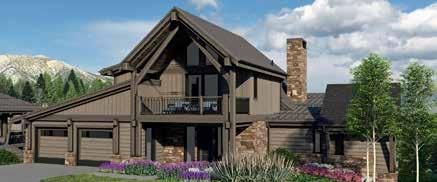
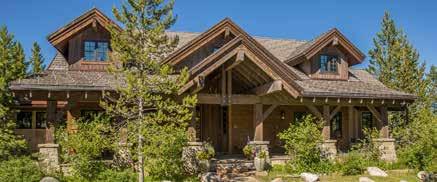
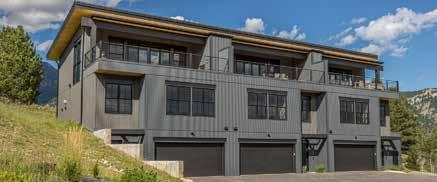

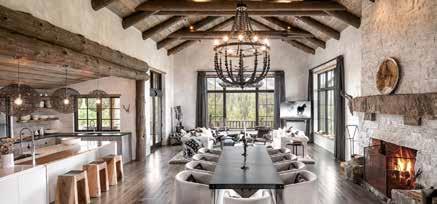





EBS STAFF
After sudden and unexpected closure of Kircher Discovery Park due to flooding, Gallatin County will support an effort to restore the park in the upcoming spring.
This August, TIGER grant construction of the pedestrian tunnel near Little Coyote Road tapped into unforeseen groundwater, causing a mudslide on the trail to Kircher Discovery Park and also flooding the riverside playground area. The park was engulfed in standing water, according to the Big Sky Community Organization.
In September, BSCO reached an agreement with Gallatin County to help fund the repairs.
“Gallatin County, Big Sky Community Organization (BSCO), and Stahley Engineering are working on solutions to address the mudslide on the trail leading to Kircher Park, and the standing water affecting the playground at the park,” Madeleine Feher, director of operations with BSCO, wrote in a statement to EBS on Sept. 20.
The solution will not be in place until the spring or summer of 2024, and Kircher Park will remain closed in the meantime. With the planned closure of a playground at Big Sky Community Park—also associated with TIGER grant construction—the Big Sky community is temporarily short of two family-oriented play spaces.
“BSCO is disappointed to have to close the trail and playground, and we appreciate the work that all parties have committed to in order to rectify the ground water issue and improve pedestrian, cyclist and motorist safety through the TIGER grant,” Feher wrote.
EBS STAFF
The Gallatin City-County Health Department will hold an information session about youth vaping on Oct. 11 at 6:30 p.m. at the Bozeman Public Library. The session will address what the health department describes as “the public health crisis caused by the use of all forms of commercial tobacco products,” according to a release from the department.
“According to a study done by the Montana Office of Public Instruction, this is 70 percent higher than the national average of 14.1 percent,” the release stated.
The release detailed that e-cigarettes and vaping can contain harmful substances, ultrafine particles, flavorings that have been connected to serious lung disease, cancer-causing chemicals, volatile compounds and heavy metals.
Additional topics related to youth vaping will be covered on Nov. 11 and Dec. 8.
EBS STAFF
A law requiring Montana motorists to give right of way to moving and stationary emergency personnel and highway workers went into effect on Oct. 1. The legislation is a revised version of previous move over regulations: drivers must slow down, yield and move over when they see flashing lights of emergency, maintenance, and road work vehicles.
For stationary vehicles, Montana drivers must reduce their speed to a post limit along maintenance areas. When there is no signage, drivers should go 20 mph below the interstate’s speed limit when they are able to move over, or half of the posted speed limit the motorist cannot give space to the stationary vehicles.
Read more specifics about the law at leg.mt.gov/bills/2023/BillHtml/ HB0470.htm
EBS STAFF
The Skyline Bus, a bus system connecting Bozeman to Big Sky, has adjusted its schedule for the shoulder season between Sept. 25 to Nov. 19. The seven-daysa-week service will revert to service twice daily, with one bus in the morning and one in the afternoon.
The change comes as the seasonal work force reduces–in the summer season, nine daily buses run between Big Sky and Bozeman. Riders can view the schedule here.
EBS STAFF
According to a release from Montana Fish, Wildlife and Parks, a hunter shot and killed a grizzly bear on Tuesday, Sept. 26. The release stated that the grizzly charged the hunter in Beattie Gulch, a valley north of Gardiner, and the hunter shot and killed the bear at close range.
“An animal carcass was found nearby, and FWP bear specialists and game wardens determined the bear was likely acting defensively,” the release stated.
The hunter was uninjured and the incident remains under investigation by the U.S. Fish & Wildlife Service.
Dear Big Sky,
A community dialog was started with the Big Sky Resort Area District (BSRAD) in January regarding the consideration of forming a municipality (incorporating Big Sky). The BSRAD Board published its commitment to working together to understand the goals, pressing issues, and what potential solutions are created by incorporating.

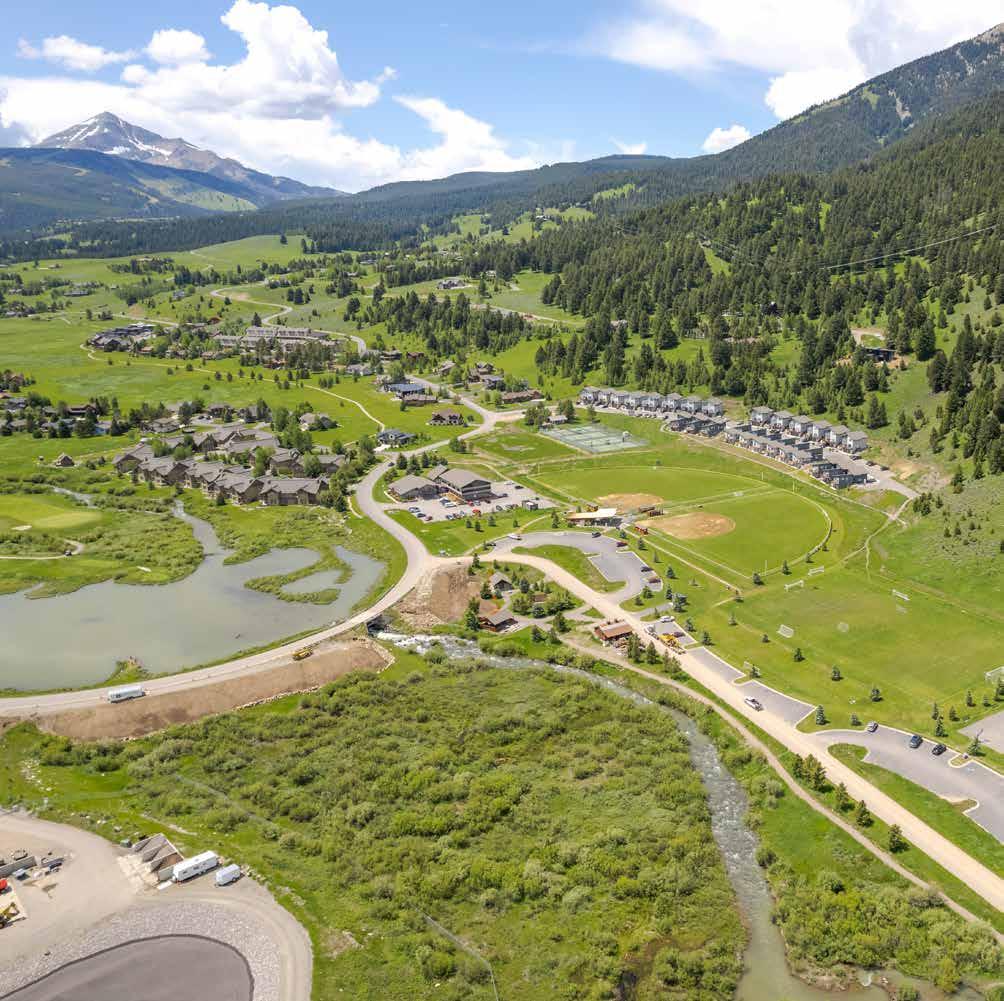
We feel transparency, education, and communication are the keys to a successful outcome, whatever that may be. Over the course of the past few months, we worked alongside community members with diverse perspectives to take a preliminary exploration into this important topic — one initiative outlined in BSRAD’s Infrastructure Investment, Funding, and Voter Representation Roadmap.
At September’s Board meeting, the group presented their initial findings and the Board agreed to move forward to develop a scope of work seeking specialized support to generate a rigorous, unconstrained incorporation study.
The study will include:
• Options for incorporation


• Potential impacts
• Legislative obstacles
• Public engagement and input
• Legal research
• Financial modeling including impacts to property taxes and resort tax

• A comprehensive list of new and reorganized public services addressing community needs
We will provide updates to this process at our monthly board meetings and encourage you to participate in this community discussion. BSRAD Board meetings can be attended in person and virtually; visit ResortTax.org for more information.
We truly are BETTER TOGETHER,
Sarah Blechta Board Chair Sarah@ResortTax.org Daniel Bierschwale Executive Director Daniel@ResortTax.orgWhen we are aware of a potential catastrophic disaster and do nothing, we are complicit. Big Sky is in an area highly susceptible to a catastrophic disaster. Examples: in 1988, 793,880 acres burned in and around Yellowstone National Park; 1959, 80 million tons of rock moved at 100 miles per hour and in less than a minute created the dam that formed Quake Lake in the Hebgen Lake; there are between 1,000 and 3,000 earthquakes annually in the Yellowstone area. We can document other recent disasters like 68 structures lost in the Bridger Foothills fire just three years ago and catastrophes like Lahaina, Maui or Libya where warning signals were ignored until thousands died in fires or floods and then the finger pointing begins.
Big Sky is on one of the largest cul-de-sacs in America! In 2000 I had to request and be granted a variance from the state of Montana in order to have more than five lots on a cul-de-sac for multiple reasons but mainly safety of the potential buyers. How many lots/homes depend on the 9.039 miles of Montana Highway 64 in and out of Big Sky? If we have a natural disaster like the ones mentioned, how do we save those residents, visitors and
structures? How do the people escape? Some say Jack Creek Road is not feasible for hauling gravel, I say it is not only feasible but essential to improve Jack Creek Road for many reasons in addition to the safety factor, like there are many public and private sections of gravel closer to it’s final destination, more affordable housing and lower cost of living for the thousands of workers from Big Sky, quicker access from the Ennis airport for Big Sky owners/guests and taking 300 round-trip, diesel belching gravel trucks off U.S. Highway 191, six days a week is just an added environmental bonus.
If necessary, the state of Montana needs to exercise its power of eminent domain to establish a practical ingress/egress from/to Big Sky into Madison County for public use and the overall good. The owners would be compensated fairly and the benefits to the public would be many and obvious! Having another route that would reduce traffic on 191 would be a major benefit as the 40 miles from Gateway to Big Sky is currently the fifth most dangerous highway in Montana. With continued growth and growing tourism this dangerous highway will only get worse and there just aren’t many reasonable alternatives to improve 191 along the already impaired Gallatin River. Jack Creek
Road would provide a critical relief valve for all the folks in Big Sky and first responders. Do it now!
The 2021 Montana legislature produced some flawed laws like House Bill 599 that allows opencut mining in your back yard unless you are zoned residential, and Senate Bill 245 that allows cities to basically eliminate current zoning for single family homes and open everything up to multiple family homes, apartments and any form of building that would possibly help with the homeless crisis and housing costs without regard to the negative impact on current residents. We all need to scrutinize the city, county and state representatives who promote or allow this kind of harmful legislation and replace them as quickly as possible with representatives who have a strong dose of common sense and will fight for the majority of their constituents.
I strongly encourage the concerned citizens of Bozeman, Gallatin County and Madison County to review the Gateway Conservation Alliance website at gatewayconservationalliance.org and get organized to fight these flawed laws.
Larry Wilcox, Gallatin Gateway



BIG SKY—It was staged for comfort—five panels of three local experts sitting in armchairs beside antique lightbulbs backdropped by a photo of Beehive Basin. Together, they shared expertise on the topics most important to their professional and community interests.
The “State of the Community” took place at the Warren Miller Performing Arts Center on Oct. 3. The presentation remains available on YouTube on the “Big Sky Community Week” channel.
“Imagine yourself in a living room,” Daniel Bierschwale, executive director of the Big Sky Resort Area District, said during the event’s introduction—BSRAD co-planned Big Sky Community Week, including the Oct. 3 gathering. “This is Big Sky’s living room; it’s a safe place.”
The event was facilitated with disarming wit by WMPAC executive and artistic director John Zirkle and community member Tallie Lancey. Event organizers counted more than 150 in attendance, including 36 through live stream.
“Oh man, I was thrilled by the amount of public engagement and participation—from people I have never seen engaged in these conversations. It’s meaningful when you really start to see folks wanting to get involved,” Bierschwale told EBS after the event.
Brad Niva, CEO of the Big Sky Chamber of Commerce which co-planned Community Week, added his view:
“Because [this community] doesn’t have a municipality, this community needs involvement to make things happen. And three years in the works between the chamber and BSRAD, trying to get more community involvement—I think this is the cumulation of three years of hard work. People are showing up, people have a voice, people are learning. And that’s the best thing about Community Week,” Niva said after the event.
The show included five sections: panels of local leaders from organizations responsible for recreation and conservation, health and safety, education and wellness, public works and ‘building community’—Big Sky’s two largest employers shared visions.
The river, the SNO and the parks and trails
The first 25-minute panel explored recreation and conservation, with leaders from the Gallatin River Task Force, Big Sky Sustainability Network Organization (SNO) and Big Sky Community Organization.
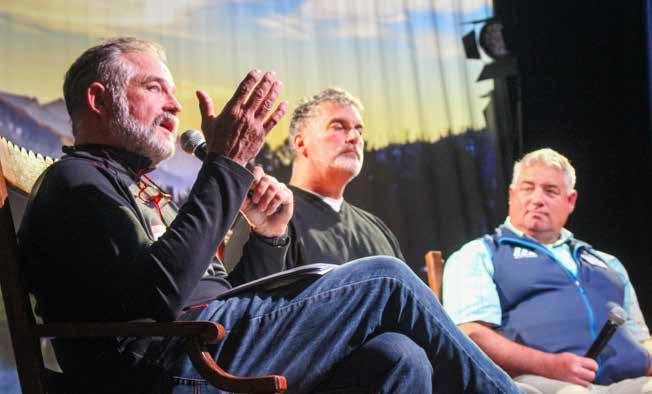
Kristin Gardner, the task force’s chief executive and science officer, presented first. She summarized how “conservation has not kept up to [Big Sky’s] 176% growth” between 2010 and 2020, but noted that Gallatin River fish populations are generally strong, and that the U.S. Forest Service is looking to GRTF for leadership on roughly 20 Gallatin River restoration projects—the USFS lacks capacity and funding to make immediate impacts, she explained.
Lizzie Peyton, director of community sustainability with Big Sky SNO, took the microphone next. In
2021, data showed more than 104 million vehicle miles driven in Big Sky—about 11 million more than the distance to the sun. She described the “massive opportunity” to increase composting to divert some of Big Sky’s extraordinary food waste. Peyton added that Big Sky SNO is making a push toward reducing emissions related to buildings and energy use.
Ashley Wilson, director of finance and administration for BSCO, provided an overview of parks and trails in Big Sky. She said BSCO is proud to offer 32 miles of accessible and free mixed-use trails, noted the new book club at BASE, with members ranging from 20 to 80 years old, and that in response to feedback from many workers in the community, BASE would extend its hours beginning Dec. 1.
Wilson summarized BSCO’s three-year strategic plan, unveiled in July, which includes renovations to the Big Sky Community Park and a new South Fork Park near Town Center.
A sheriff, a fire chief, and a hospital administrator walk onto a stage...
Chris Darnell, administrator for Bozeman Health Big Sky Medical Center, began the discussion by describing 2022 as “the worst year for healthcare financials ever, in the history of time.”
Despite the challenges following the COVID-19 pandemic, Darnell was proud to share that the eight-year-old Big Sky Medical Center does see an upside: the hospital recently earned designation as a level-five trauma receiving facility and in the past year, added outpatient physical therapy and a swing-bed program.
Noting Big Sky Medical Center’s neutrality on the topic, Darnell also pointed out that a pair of petitions are listed online to create a “wellness district” in Big Sky—the two petitions are to deannex from the existing hospital district and to create one unique to Big Sky.
Gallatin County Sheriff Dan Springer followed Darnell with a sharp statistic: from 2019 to 2022, criminal cases have increased by 50% in the Big Sky area. As Big Sky lacks a police force and the
demand for law enforcement increases, Springer was pleased to share that the Sheriff’s office increased deputy staffing in Big Sky from six to eight deputies, and the county now offers 24/7 coverage in Big Sky.
Springer pointed out the challenge of housing those deputies in Big Sky, and the benefits of connection between law enforcement and their community. Providing housing will be a priority, he explained.
Big Sky Fire Department Chief Greg Megaard shared a plan for a three-story fire training facility across from the Powder Light apartments— currently, the nearest training facilities are in Belgrade. He also spoke about a third fire station in the Spanish Peaks community area, to improve response time, and announced that a “fire mitigation crew” will engage homeowners and subdivisions to reduce fire hazards and other fire risk factors on properties community-wide.
Lancey asked all three officials: are we, as local residents, safe here?
Sheriff Springer answered yes, that crime rates in Gallatin County and the Big Sky area are low, “but we want to kind of continue to keep it that way” and the presence of Sheriff’s deputies is key.
Chief Megaard agreed that current fire safety is strong, and BSFD’s responsibility is continued improvement. Darnell echoed that view.
Compelling numbers from education and wellness
Just short of an hour into the “State of the Community,” the third panel took the stage to discuss education, childcare and local service needs.
Dr. Dustin Shipman, superintendent of the Big Sky School District, shared the completion of phase two of BSSD’s three-phase master facilities plan, and the launch of a 4-K program. Shipman also beamed that Lone Peak High School was recently ranked atop Montana public schools for college readiness.
Big Sky Community Food Bank manager Sarah Gaither Bivins spoke on community wellness. She
discussed Big Sky’s behavior health coalition— representatives from Wellness in Action, BSCO, Big Sky Medical Center, HRDC, Yellowstone Club Community Foundation and the food bank.
Last winter, Gaither Bivins said, was a “severe crisis. Last winter almost broke us, it felt like. My [food bank] services at the food bank were up 97% from the year before, which was up 60% from the year before that. I’ve been doing this for 10 years, and I’d only ever seen a 10% increase.” The increase, she said, is due to both inflation and Big Sky’s growing workforce population.
She also advocated for the creation of a wellness district, which will require steps including a petition. She pointed out that WIA saw a 250% increase in demand for counseling services.
Jackie Haines, executive director of the Northern Rocky Mountain Economic Development District, elicited gasps from the crowd with statistics on Big Sky’s childcare and family living costs: 75% of two-parent families have two parents in the workforce, compared to Gallatin County (65%) and Madison County (57%). In Big Sky, 96% of women with children are in the labor force, compared to Gallatin County (66%) and Madison County (51%).
From a Big Sky childcare survey with 244 respondents, the average annual cost for childcare in Big Sky is $20,796—16.2% of median family income, compared to the national affordability standard of 7%. Haines went on, showing the drastic hurdles facing Big Sky families. And with American Rescue Plan Act funding going away after 2023, Haines pointed out that childcare providers are facing a “funding cliff.”
Big Sky’s full childcare report is available here and Elevate Big Sky hosts an information page on livability.

Brad Niva kicked off the public works panel with announcement that new wayfinding signs will be installed next spring to create a sense of place in Big Sky. He also described his effort to lead Big Sky Chamber of Commerce away from requiring resort tax funding.
To address an “anti-tourism sentiment in this community” during COVID, Niva described his work with Visit Big Sky—a tourism marketing
organization—to survey visitors and local residents on both sides of the Big Sky tourism experience. Darren Brugmann, executive director of the Big Sky Transportation District, discussed the plan to improve public transportation options in Big Sky—and connecting routes to the Gallatin Valley. The transportation district has been working with a consultant to define future vision, and Brugmann said a strategic plan will be shared in the coming weeks.
Ron Edwards, general manager of the Big Sky County Water and Sewer District, introduced Johnny O’Connor, his replacement, and showed data on the uptick in wastewater flow since the mid-1990s. He thanked Resort Tax for funding roughly $27 million toward the new Wastewater Resource Recovery Facility, costing more than $50 million in total.
David and Goliaths on community vision— housing trust, Lone Mountain Land Company and Big Sky Resort
David O’Connor, executive director of the Big Sky Community Housing Trust, opened the final panel: building community. He spoke about the housing trust’s efforts to improve housing access and affordability in Big Sky, including condominium and apartment construction, and programs to bring housing units under workforce-only deed restrictions and to incentivize renting to local workers.
Matt Kidd, managing director of CrossHarbor Capital and Lone Mountain Land Company, began by thanking event attendees and Community Week organizers, and the dozen panelists that preceded him onstage. He then emphasized “interdependent goals” from the past decade: to make Big Sky a world class ski destination, and to make Big Sky a thriving, year-round community. Kidd also urged the community to “get involved, find common ground, and be nice to each other.”
Kidd later answered an audience question about LMLC’s development plans in Town Center and the south fork area, including the developer’s commitment to open space. He affirmed the company’s commitment to open space, adding that LMLC has not started any new projects in 2023, aside from workforce housing. More is likely to continue in 2024, he hopes.
Finally, Big Sky Resort General Manager Troy Nedved spoke to a 50-year party happening
all winter long—the celebration of the resort’s milestone this season. Nedved said Big Sky Resort now hosts about 200,000 unique visitors each year. He also said the resort will provide 833 beds for employees this winter, nearing half of roughly 2,000 total. The resort has previously shared its goal to reach 1,000 beds by 2024.
Nedved also spoke about the new 75-person Lone Peak Tram as it wraps up construction and plans to open this winter. He said similar to Big Sky’s “pre-tram” and “post-tram” communities—divided as such by arrivals after December 1995—a new era will begin this winter. Soon, a gondola will connect the base area to the peak of Lone Mountain and help the resort become “the most technologically advanced lift infrastructure in North America,” he said.
Before the evening wrapped up, Zirkle asked the panel about “the missing middle,” referring to Big Sky’s costs of housing and living that create barriers for families and long-term community workers.
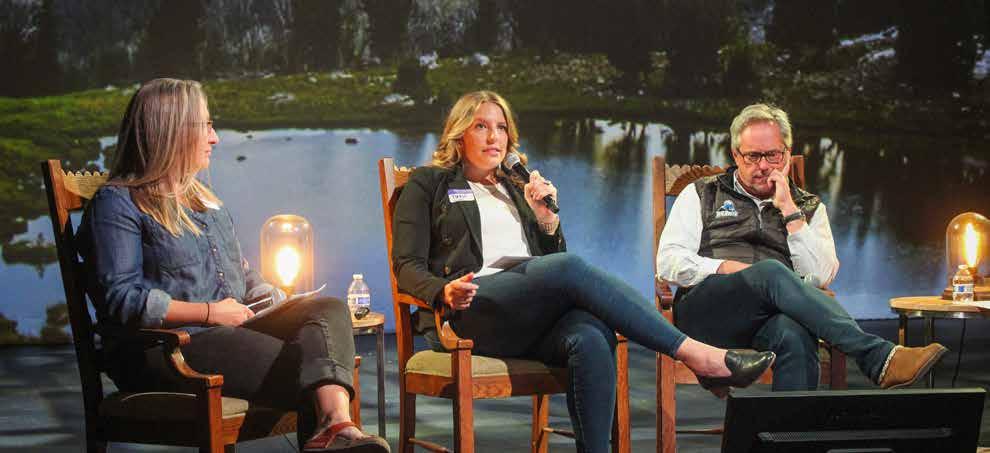
Kidd suggested that the Big Sky community extends beyond Big Sky—community members come from the Greater Yellowstone Ecosystem, he said, with emphasis on Bozeman.
“Five years from now, we want there to be more locals in Big Sky than there are today,” he added.
O’Connor said that the community is collaborating now more than ever, but Big Sky needs to be able to retain community leaders, a thought shared by Nedved, who believes Big Sky is early enough in its development that those leaders can help build better than many similar towns—some that face community challenges at higher levels of maturity.
“It’s not just an economic determination. It’s what makes a community, a community, is that shared sense of value and contribution,” O’Connor said.
Big Sky Resort unveiled its winter 2023-24 trail map on Tuesday, Sept. 26. Aside from the new Lone Peak Tram, the map shows another significant change: double-blue squares are included in the mountain’s terrain rating system and will now represent about 15% of marked terrain.

Representing “advanced intermediate” terrain, the mountain aims to offer better clarity with regards to the slope ahead.
“The increased specificity gives skiers more confidence when making terrain decisions and navigating the mountain,” the resort stated in a blog update on its website. This change follows the resort’s decision to change green circle trails Safari and El Dorado to blue squares. The resort stated that this “created a cascading effect as some terrain historically rated as a single blue, such as Elk Park Ridge and Ambush, would need a recalibration to double blue/advanced intermediate to reflect their steeper pitch accurately.”

According to PR Manager Stacie Mesuda, “This was a mountain operations initiative. Big Sky Resort’s mountain operations team took on the task of evaluating our current terrain ratings and recalibrating when necessary. The rationale was to have each run category be more similar to each other.”
The changes are shown in the updated trail map for winter 2022-23.
A close inspection
Anybody who has skied terrain off the Southern Comfort chairlift at Big Sky Resort has likely witnessed a debacle on El Dorado, the lift-line trail. This former green circle—now a blue square— has a steep section right in the middle, under the chairlift. That section could cause breakdowns
including panicked wipeouts as speeds increased, fits thrown by novice children and adults, and many choosing to carry their gear in their arms as they proceed to walk down the slope under the wellridden high-speed quad. However, experienced skiers and decent human beings would not judge, understanding that El Dorado was not the easiest green-rated run at the resort.
As of now, Safari is the other green trail that has been promoted to blue for the 2023-24 winter season. Instructors in the snowsports program at the resort know just how difficult it can be to take green-level skiers down Safari, with many instructors encouraging their students by telling them that it should be rated a blue square. In fact, many of the greens at the resort present challenges that may remind all skilled skiers and riders just how difficult it can be for beginners to learn how to control their descent down a mountain. Pacifier, while it has been widened, still has its sharp right
turn before heading back toward the base—and of course, Mr. K has its infamous headwall.
The ski industry’s traditional rating system of green, blue and black represent “easiest,” “more difficult,” and “most difficult.” That now presents a shortcoming in Big Sky—two runs that were once the hardest of the “easiest” runs on the mountain are likely now the easiest of the “more difficult” runs. Without the double-blue “advanced intermediate” classification, Safari and El Dorado would be competing in the same weight class as heavyweight contenders like Ambush and Elk Park Ridge.
For years, skiers at Big Sky Resort have suggested, “The blues here are like blacks at other resorts.” And while the study needed to substantiate those claims might prove to be an endless endeavor, it is certain that local blues will not be turning black any time soon, only bluer.
Friday: 3-7pm






Saturday: 12-8pm





Fire Pit Park

Lone Peak Dr. Loop



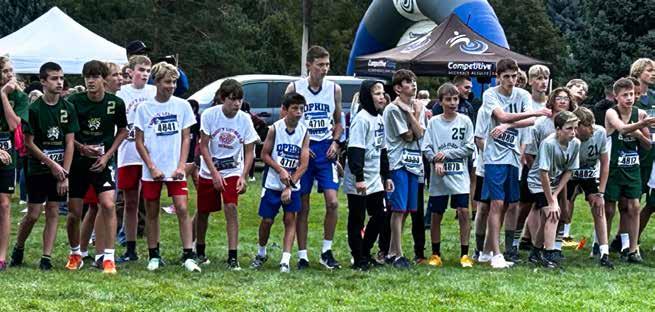 BY JACK REANEY
BY JACK REANEY







Ophir Middle School introduced a co-ed crosscountry team this fall, and coach Tina Albers hopes it will blossom into a high school program. Last spring, Albers started the Ophir Middle School track team and saw strong participation. Lone Peak High School introduced a girls crosscountry team last fall, but not enough high school students showed interest in either of the program’s first two years. Albers would have coached that team.
“This fall, I decided, since we don’t have high school cross-country—because no girls were going out [for it]—I’d start the middle school [team]. And it’s been very successful,” Albers said. Ophir’s founding cross-country runners are Nick Hoadley, Nikky Kamenizrz, Sam Miller, Russell and Steen Mitchell.
Coach Albers is looking for kids who aren’t usually involved in team sports, and of those who are athletes, she’s found they’re becoming dedicated runners. She even has a couple runners splitting time with soccer and entering cross-country meets when they can.
This year, the team had seven meets. Albers is considering bringing a couple of her middle
schoolers to Kentucky for the national middle school meet. Someday, Albers imagines hosting cross-country meets in Big Sky.
“We have enough area around here,” she suggested. “If we could talk someone—if we could talk the golf course into letting us run the course, that would be good. But we have enough trails around here too, that we could probably get something going.”
When trying to convince runners to join, Albers acknowledges that cross-country practices are hard.
“But when you go out and you’re in a race, and you’re in the top 10, or top 30. It’s extremely rewarding… It’s the excitement of doing well,” she said.
For now, the high school’s cross-country team would only allow girls. But with middle school boys feeding into the high school, Albers hopes everyone can participate when the program launches.
“Every single meet they just get better and better and better. It’s fun to watch,” Albers said.


Buck’s T-4, a keystone of Big Sky history for 75 years, is closing its restaurant and bar for an indefinite period.

The restaurant and bar, built in 1950, originally planned to open for the 2023 winter season on Dec. 16. However, according to a statement from a representative of Buck’s T-4, current employees are being offered positions at three affiliated businesses in Town Center.
“We are committed to ensuring a smooth transition for all current employees during this closure. Our partner HHM [Hersha Hospitality Management, LP], manages three businesses in Town Center and is providing relocation opportunities for our valued staff members. We are working closely with HHM to facilitate a seamless transfer for all interested employees,” the Sept. 27 statement said.
As discussed in Explore Big Sky’s recent issue of “Making it in Big Sky,” Buck’s T-4 was purchased in 2020 by Lone Mountain Land Company. The local development company also purchased roughly 500 acres of land in Town Center in May 2022, and owns or operates a number of local hospitality businesses including Block 3, Tips Up, Montage Big Sky and the Wilson Hotel.
Buck’s new management expressed high hopes for integrating the classic roadhouse into other local
hospitality offerings. Some recent discussions had included possible renovations.
“Buck’s T4 is a long-time valued business, and our aim is to find the perfect partner who shares our vision and values to execute this restaurant and its full potential,” the statement continued. “After which, we will make plans to reopen Buck’s T4 Restaurant and Bar.”
Buck’s T-4 was established in 1946 by Buck and Helen Knight. Initially a hunting camp, the addition of a restaurant and bar made Buck’s “a favorite Montana roadhouse for
locals, hunters and tourists to Yellowstone National Park,” according to a history page on the Buck’s T-4 website.
The Knights sold to the Scholz family in 1972, and Mike Scholz ran the business for 34 years. “He displayed the same pride of ownership demonstrated by the Knights, striving to fulfill both the Knights’ and his dream of making Buck’s T-4 a resort complex,” the website states. Buck’s T-4 became a well-regarded dance hall, dining destination and event space.
Scholz later partnered with David O’Connor and Chuck Schommer, working intermittently with the pair until retiring in 2013.
When Scholz sold his business for the second time in 2013—he’d first retired in 2006 before re-engaging in 2009—the website described that he was able to “once again pass the baton, this time from one family to two others.”
O’Connor and Schommer carried on the legacy until they sold the business in 2020.
“The baton has been passed once again,” the Buck’s T-4 website stated with regards to the 2020 acquisition. “This time, from two families to several families, still working together to create memorable experiences for our guests.” With this uncertain closure, less may be known about the future of one of Big Sky’s oldest surviving establishments. For now, regulars of the roadhouse can keep an eye out for any plans to reopen.
For the first time, walkers, bikers, runners and skateboarders can cross under Montana Highway 64 at the east junction of Little Coyote Road. The pedestrian tunnel was recently opened, marking a milestone of the summer’s TIGER grant roadwork.

The pedestrian tunnel is “substantially complete,” although the tunnel floor will be paved next summer. The current ground surface is concrete, and project officials warn of a tripping hazard created by an uneven surface on each end of the tunnel. Light fixtures are yet to be installed, but the tunnel should be lit by early October.
A project PR representative shared the background of this tunnel in an email to EBS:
“When the TIGER grant application was written in 2017, [the] Big Sky Community Organization was in the process of drafting a Big Sky Parks and Open Space Plan and updating the Big Sky Master Trails Plan, which included the tunnel. Although this planning process was the foundation for including the pedestrian in the TIGER grant application, the need for pedestrian and bicycle connectivity in this area has been a topic of discussion for more than a decade.”
Above the tunnel, a new stoplight was installed in mid-August. That stoplight is scheduled for
activation on Oct. 12, according to a community week update from project representatives.
Work will continue into October to install signs and paint the newly constructed pavement and turn-lanes. In addition, the shared-use walking path is paved and complete between Big Pine Drive and Andesite Road.
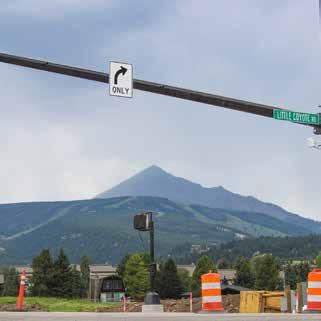
“Improvements near the intersection of Montana Highway 64 and U.S. Highway 191 will be completed during the 2024 construction season,” the Sept. 22 email stated.
Various other tasks, including paving of the tunnel floor, will be finished in 2024.







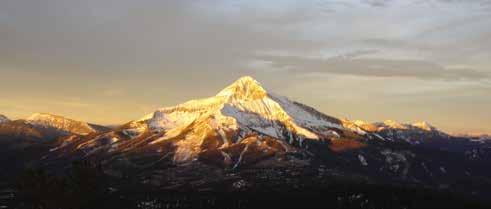


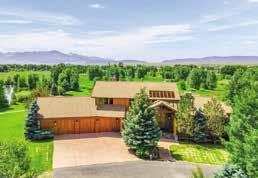
BIG SKY—Lone Peak High School’s homecoming week gathered many dozens of community members at the Big Horn Coliseum on Friday, Sept. 29, where the Big Horns (2-3) faced off against the Choteau High School Bulldogs (4-1).
It was an important matchup for the Big Horns’ playoff hunt, and the team expected a tough opponent. Tough as they were, the Bulldogs couldn’t keep up.
In the week leading up to the game, head coach Dustin Shipman and fellow coaches preached that beating Choteau would require a full team effort. Shipman praised Lone Peak’s offensive line, the team’s five seniors and standout performances from senior David Perdue and sophomore Ebe Grabow.
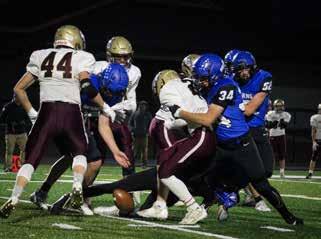
“I think the kids really—they wanted this. And they executed great… They played exactly how they practiced this week, and we had the best week of practice we’ve had all year,” coach Shipman told EBS after the game.
Sophomore linebacker Eli Gale came up big on defense throughout the game, but he established his presence early: the Bulldogs started with the ball, and Gale got the crowd’s attention on the second play when he halted a Choteau run with a 1-on-1 tackle at the line.
The Bulldogs punted shortly thereafter, and the Big Horn offense got right to work.
On their first play from scrimmage, senior quarterback Juliusz Shipman found Grabow wide open for a 70-yard touchdown.
The Bulldogs showcased big-play ability of their own on Friday. Junior running back Nathan Gunderson broke loose for a long touchdown in the first quarter, and the Bulldogs converted to take the lead, 8-6.
Perdue ran for a touchdown on the ensuing Big Horn drive. After another failed two-point conversion, the Big Horns led 12-8 through the first quarter.
In the first play of the second quarter, Shipman targeted Grabow in the end zone. Grabow beat double coverage for his second receiving touchdown. This time, Shipman scrambled for an extra two points, and the Big Horns extended their lead, 20-8.
Again, the Bulldogs answered—and converted for two—to bring the score to 20-16. As darkness set in and the air cooled, the game seemed headed toward a homecoming dogfight.
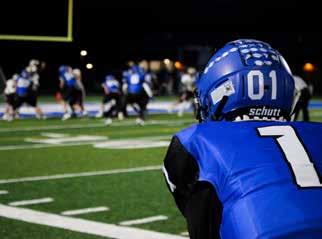
Just then, the Bulldogs stopped executing.
Lone Peak kicker Jose Chairez, a junior, had been displaying power all season. The Big Horns couldn’t make anything happen after the Bulldogs’ second touchdown, and Chairez led the punt-unit onto the field. But Choteau fumbled and the Big Horns regained possession in the red zone.
Shipman looked for Grabow on fourth down, and a miscommunication led to Shipman’s only interception of the game. After giving away a scoring chance, the Big Horn defense responded by forcing a three-and-out by the Bulldogs.
The Big Horn offense took full advantage this time around, bullying their way downfield: a nine-yard run by Perdue, nine-yard receptions by Grabow and senior Aidan Germain, and a breakout run by Shipman for the score—he dashed to the pylon to for two points, and the Big Horns led 28-16.
The Bulldogs nearly returned Chairez’s kickoff, but Germain tracked the runner down near the 10-yard line. That stop proved crucial, as the Bulldogs didn’t move an inch before halftime. The score remained.
‘It just means everything to us’
The Big Horns jumped on their first chance in the second half: after Choteau’s kicker failed two
kickoffs—penalized for kicking out of bounds— Grabow returned the kickoff on a short field. He broke a few tackles, changed directions and won a footrace of his own creation.
Shipman ran another two-pointer, giving the Big Horns a 36-16 lead.
Near the end of the third quarter, Shipman furthered the game from Choteau’s reach: he rushed thrice and scored—his fourth total touchdown of the night, in a game when he hobbled off the field more than once but always returned to make key plays on both sides of the ball.
Coach Shipman commented on Juliusz’s toughness: “He brings a real spark, a lot of athleticism, and a little more dynamic approach to our offense. I think having him on the field is really important for the offense, but it’s really important for the guys too because he’s developed into a pretty good leader for this team,” coach Shipman said.
Juliusz explained, “Us five seniors only got three or four more games. So I just want to play every single play, and I know they do too.”
Germain capped the night with a touchdown run, and the Big Horns allowed just one score in the final eight minutes. Lone Peak improved to 3-3 with a less-than-likely hometown blowout.
Grabow said the 48-24 win gives the Big Horns “great confidence,” but they’ll need to stay focused, smooth and sharp at practice next week.
“That’s a great team, and they’ve been a competitor for us for the last three years,” Grabow said. “They come out hot every day, and this homecoming, I mean, it just means everything to us. We need that… just the community, everyone showing out. What else could we ask for?”
Juliusz Shipman said the game was super fun and loud, thanks to the home fans.
“I think we brought the energy that they didn’t think we were gonna have. And it shows,” he said.
“It’s huge for us, because that’s a team, like, we were not expected to beat,” he added.
Next week won’t be any easier: the Big Horns (3-3) will visit the Simms High School Tigers (5-1). Juliusz Shipman expects an even bigger challenge than Choteau.

“We’re gonna have to bring that physicality, and just bring the energy. I think we’ve got good momentum,” he said.
Linebacker Eli Gale isn’t afraid either:
“It’s gonna be a tough game, but we’re gonna win.”
The Big Horns play two games on the road, before returning to the Big Horn Coliseum for senior night on Oct. 20, hosting Powell County High School (Deer Lodge).
On Thursday, Sept. 29, the Lone Peak Big Horn girls and boys soccer teams hosted the Laurel Locomotives for their homecoming games.
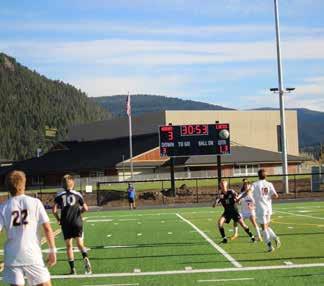

The boys game started off at 4 p.m. with heavy possession in Laurel’s half until the 17th minute when senior Beckett Johnson scored from the center of the box, a goal that set a trend for the rest of the half; every ten minutes a ball passed Laurel’s keeper until the score came to 3-0, 38 minutes into the first half.
Senior Cash Beattie executed the second and third goal: the first on a free kick outside of the box and the second on a clean run after a cross.
At the end of the first half, the Big Horns played one man down after a red card infraction at the 40th minute.
The second half saw a shift in momentum, turning to the Locomotives who quickly moved the ball into the Big Horns’ half. Three minutes in, Laurel tested Big Horn freshman goalkeeper Miles Romney who was able to make crucial saves on breakaways.
At the 13th minute, Laurel’s midfielder took a shot from the 20-yard line. The ball landed at the top left corner of the net. Eight minutes later, Laurel’s Cooper Davis scored from the same distance.
With the score at 3-2 only 21 minutes into the second half, the game could have been anyone’s. The ball moved up and down the field as possession changed rapidly and crosses flew into both teams’ boxes. In the last five minutes, the homecoming crowd held their breath as a corner kick made its way across the Big Horn penalty line.
What followed could be described as a passionate scramble as the Big Horns evacuated the ball and held possession under fierce pressure from the Locomotives—turnovers were abundant.
Finally, the ref blew his whistle, ending the game with a final score of 3-2, Big Horns.
“I thought we were pretty solid in the first half on offense. And in the second half, we were very solid on defense. [Laurel] had a few great goals,”
freshman goalkeeper Miles Romney said after the win.
“It felt really good. I’m very excited that we could pull that off,” Romney added.
Head coach Tony Coppola described the win, which earned the boys team a spot in the state tournament: “Laurel was a tough competitor and definitely played a more even match than our first meeting this season,” he wrote in an email to EBS.
“Playing a man down was challenging for the boys, but I am proud of how they showed grit and composure down the stretch,” Coppola wrote. Next, the boys will visit Park High School. Coppola described the game as “crucial.”
“We need to win and will use the time leading up to our game on Oct. 5 by preparing the team both mentally and physically,” Coppola continued. “Park High is always a tough game and we will need to play our game and show up poised to win.”
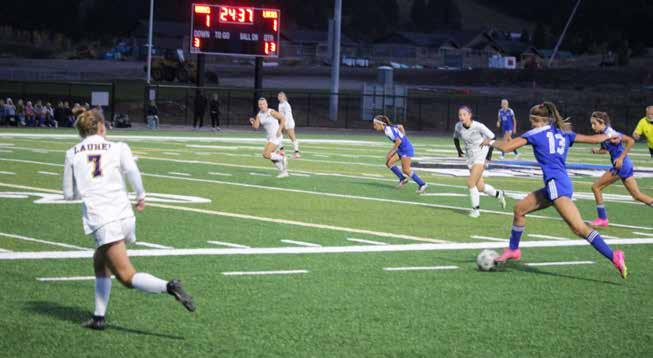
The Big Horn girls soccer team played at 6 p.m. with high energy, moving the ball in Laurel’s half and keeping it there for the first 16 minutes, creating a chance with a penalty kick.
Senior captain Astrid McGuire put the penalty away for a 1-0 lead early on. Eighth grader Maeve
McRae continued to move the ball down the field, orchestrating crosses and pressuring Laurel’s defense with strong footwork.
Soon after, Laurel returned the favor, tying the game.
At 38 minutes, the crowd gasped as McRae collaborated with fellow eighth grader Lola Morris in a two-touch pass combo, landing McRae in shooting position. She swung, testing Laurel’s goalkeeper RaeLynn Wagner who saved it.
It was clear that the Big Horns found a sense of flow by the second half. The center midfield maintained possession as sophomore Harper Morris distributed the ball to right and left wingers, aided by sophomore Maddie Wilcynski who connected passes and pressured Laurel midfielders.
Opportunities came in the form of crosses from sophomore Cate Leydig and corner kicks. Twentyfive minutes into the second half, the homecoming crowd began to cheer as sophomore Poppy Towle and Leydig worked the ball up the left hand side in sharp passes.
The momentum led to a one-on-one with Laurel’s goalkeeper but Laurel was able to hold off the Big Horns for the rest of the game.
“I would say we play a lot better at home in terms of support. Today especially we had the younger people looking up to us because we walked out with them.” McGuire said after the tie, speaking of the pregame ritual where the Big Horn players were escorted on the field by younger members of the community.
“This is definitely the best season we’ve had thus far since Astrid and I were on the inaugural team our freshman year,” senior captain Chole Unger said. “So it’s really cool to see all the growth and how far we’ve come.”
“Playoffs is our end goal for the season because our team has never made it to playoffs,” Unger said about the rest of the season.
Both soccer teams will face Park High School away on Oct. 5.
BIG SKY—The Lone Peak High School Big Horns fell just short of their first victory of the season in back-to-back matches against Whitehall High School on Tuesday, Sept. 26 and Friday, Sept. 29. Head coach Bailey Dowd said they could have won the matches, which both reached a winnertake-all fifth game—and Whitehall took all.
Still, Dowd is seeing positives in her winless team. Between Tuesday and Friday, she saw improvement and a “much more consistent game of volleyball” in the latter match against Whitehall.

“In the first four sets of each game, we played strong and confident volleyball,” Dowd said. “And we got nervous down the stretch in the fifth game. That 15-point [fifth] game, you know, the whole night’s on the line. The nerves definitely showed, and unfortunately that was the difference in both matches.”
Senior Vera Grabow missed most of the season with an injured ankle, but made her return—only serving, for now—on Friday night against Whitehall.
Coach Dowd said Grabow had five aces among her 15 serves, and she added energy and positive momentum.
“It was a pretty spectacular moment on Friday night,” Dowd said. “Her first point back in, we had a huge crowd here for homecoming week. Our bench, the [crowd], everyone really lit up and supported her for coming back. Even if it’s in a limited way for now, it’s important for the team as our captain… the support we felt for her was awesome. And it was electric.”
On Saturday, the Big Horns hosted Broadwater High School (Townsend) for their homecoming match. The Bulldogs entered undefeated, ranked atop Lone Peak’s division and high among
Montana Class B volleyball—the Big Horns joined from Class C after last season.


“We hung with them. I told the girls in the locker room that I’m really proud of how they played, especially in the first two sets,” Dowd said after Saturday’s match. “In those first two sets, we really did hang with them, point after point, and played two really competitive games.”
Dowd said the Big Horns’ front row was firing against a fast offense, and they might have out-blocked the Bulldogs. Still, Townsend’s high-powered spread was too much for a young Lone Peak team, and the Bulldogs swept the Big Horns, 3-0.
“Compared to how we played them a month ago? Night and day. I’m really proud of the progress we’ve made in the last month,” Dowd said.
Before the match, technical difficulties prompted Athletic Director John Hannahs to use his outside voice: he shouted to welcome the crowd for homecoming, and he added some bass to the national anthem, sung beautifully by Lone Peak senior Abby Meredith without a microphone but gently hummed by both sides of a supportive crowd. Afterwards, Hannahs announced the starting lineups with gusto.
The Big Horns lost the first two games of the match, both 25-15, and the third game 25-9. However, they sparked scoring runs against a tough Bulldog defense, including scoring six of seven in the first game to cut their deficit to 17-13. In the second game, sophomore Lily Turner served a stretch of six straight points including an ace, and a spike from senior Ella Meredith that prompted a distressed Bulldog huddle as the scoreboard showed 12-11 in the undefeated team’s favor.
Throughout the afternoon, the packed gymnasium buzzed with homecoming energy. Parents and classmates applauded strong plays, caring less for the overall trend of the game—which mostly kept the Bulldogs in the lead—and more for the quality of Big Horn volleyball.
“It’s awesome, I can’t thank this town enough for coming out to support us. Even in a hard first season in [Class] B, parents, students and staff— everyone’s been here to support us all the way through,” Dowd said.
On the court, Lone Peak players smiled and highfived, celebrating their level of competition against a highly regarded team. Grabow continued to sub-in for serves, adding moments of energy to team huddles.
Coach Dowd said the second half of the season has been exciting as her team learns and improves against opponents they faced earlier on.
“We’ve gotten better and better throughout the season, so it will be nice to have some redemption moments,” she said.
On Saturday, Oct. 7, the Big Horns will play their final home match against Manhattan High School. The team will celebrate senior night and honor Vera Grabow, Greta McClain, Ella Meredith, Dylan Klein and Emerson Tatom.
They’ll finish with four matches on the road, before entering the district tournament.
HORNS’ FIRST CAMPAIGN IN CLASS BGrabow continued serving on Saturday. PHOTO BY JACK REANEY PHOTO BY JACK REANEY The Big Horns did not win, but stayed positive during their homecoming match against Townsend. PHOTO BY JACK REANEY
BOZEMAN—The Montana State University Bobcats put the disappointment of missed opportunities on Sept. 9 against the defending national champions in the rearview quickly, showing flashes of dominance to enter their bye week in perfect position.
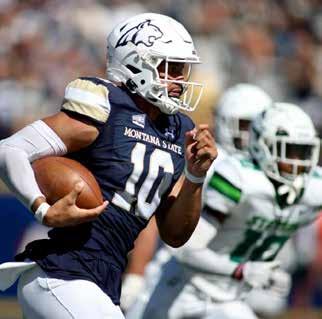
Montana State went to Brookings, S.D. the second week of the regular season to take on the defending national champions in South Dakota State University. The Jackrabbits ended MSU’s season in convincing fashion in 2022, putting the Bobcat offense on skates on the icy, slick field at Dana K. Dykhouse Stadium in a lopsided 39-18 victory that booked SDSU’s ticket to the FCS national championship game.
About 10 months later, Montana State had multiple chances to spring an upset in the Week 2 matchup between two of the top teams in the country. The Bobcats blocked a punt right at the Jackrabbits’ goal line but failed to convert the ensuing possession into a touchdown. MSU also had a fourth down and goal from the SDSU 1-yard line but committed a pair of false start penalties, two of nine false starts and 12 total penalties on the evening for the Bobcats.
Despite pitching a first half shutout and holding SDSU to just 20 points—the Jackrabbits have only been held to 20 or fewer points three times over the last three-plus seasons with stellar quarterback Mark Gronowski at the helm—Montana State walked away on the losing end.
The 20-16 loss could’ve festered and altered the supreme confidence of a Bobcat crew that has been to the Final Four of the FCS Playoffs three seasons in a row. Instead, Montana State proved once again it can refocus sharply. After dominant wins over Stetson (5720), No. 9 Weber State (40-0) and upstart Portland State (38-22) on the final Saturday of September, the Bobcats enter their 2023 bye week right where they hoped to be.
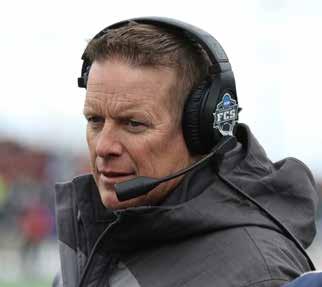
“We took a good shot from Portland State, we prevailed and now we move on,” Montana State head coach Brent Vigen said after the Bobcat’s homecoming win on Sept. 30. “This was good for us.”
MSU’s win over Portland State moved the Bobcats to 2-0 in Big Sky Conference play, 4-1 overall. Montana State has won 10 straight Big Sky games and now hold a program-record 23-game winning streak at home.
“We are in a position with our success that we are going to get everybody’s best shot and that’s the reality of it,” Vigen said. “You can tell your guys that all week, they have good players, we are going to get everybody’s best shot, but ultimately until things start happening and the game unfolds, you don’t know how it’s going to play out.
“Every game is its own game and every game is not going to be perfect. Every game is not going to go exactly how you want it to. How are you going to respond when things go well and when things don’t go your way, that’s what we have to be about. Forward thinking. That’s what we are doing well right now.
“Today [after the Portland State win], we took their best shot, we got a win and now we enter our bye week in a good spot,” Vigen said in the post-game press conference.
The sum of Vigen’s accomplishments during his two and a half seasons guiding Montana State are already impressive. The SDSU loss was only MSU’s second
regular-season loss to an FCS team under Vigen’s guidance—the other was a 29-10 loss at the University of Montana in Missoula in the 2021 rivalry game, Vigen’s first taste of the bitter clash.
Montana State has only lost six of 34 total games with Vigen as the head coach. Two of those losses came to FBS programs Wyoming and Oregon State. One was the rivalry game in Missoula and another was this season, the Week 2 loss against SDSU. The other two came in the postseason: 38-10 to North Dakota State
Univesity in the 2021 national championship game and the playoff loss in Brookings last year.
While Vigen and company have proven they will find ways to win against pretty much every other FCS team on their schedule, the question remains: how do the Bobcats close to gap between themselves, NDSU and SDSU? The Bison have played in 10 of the last 12 national title games and boast nine national championships. The Jackrabbits played for the spring national title in 2021, won the crown last fall and have advanced to the FCS semifinals five times in six years. MSU has certainly established itself as the definitive third-best program in the country. And after NDSU lost 24-19 to the University of South Dakota Coyotes in Fargo, North Dakota to end September, MSU enters October with a No. 2 national ranking.
The Bobcats have done it with a bruising run game that is averaging 325 yards per game, a full 45 yards more than any other team in the country.
Montana State’s much-improved defense is allowing 15 points per game. The shutout against Weber State University was Montana State’s first against a Big Sky opponent since 2006. And the Bobcats have rolled up 14 sacks, which ranks ninth in the country.
Perhaps the most impressive part of the first half of Montana State’s 2023 campaign has been MSU’s ability to navigate unavailability.
Sidelined stars
Lonyatta Alexander Jr., a former 4-star recruit who spent time at Arizona State University and University of Washington before transferring to MSU, was expected to be Montana State’s top receiving option. The NCAA denied his transfer waiver, rendering him ineligible this season.

Tommy Mellott, a junior captain and one of the faces of the Bobcat program, was knocked out with a leg injury in the third quarter against SDSU and has not played since.
J.T. Reed, a second-team All-Big Sky offensive lineman last season and a preseason all-conference pick before this year, has yet to play in a game. Senior running back Lane Sumner started MSU’s first game against Utah Tech, but suffered an ankle injury four plays in. He’s been on the shelf ever since.
Ty McCullouch, a Colorado State transfer Vigen called the fastest players on the team, missed the first four games of the season with an injury. Other elite players that have seen playing time impacted by health issues include all-conference junior cornerback Simeon Woodard, slot receiver and all-conference punt returner Taco Dowler, and his twin brother Caden Dowler, MSU’s starting nickelback until tearing his knee.
None of it has impacted winning. It’s all part of the steady focus and steadfast attitude Vigen instills in his players.
“I think we are capable of playing the brand of football we want to and that’s playing fast, that’s being physical,” Vigen said. “That’s what we have wanted to be about. Each week provides its own test."
“Each day, you develop more character and I think we have more character right now. There’s a relative confidence within this team that helps us trust one another and believe we are going to find a way.”
No. 2 Montana State hosts California Polytechnic State University (Cal Poly) on Oct. 14 coming off of a bye week.








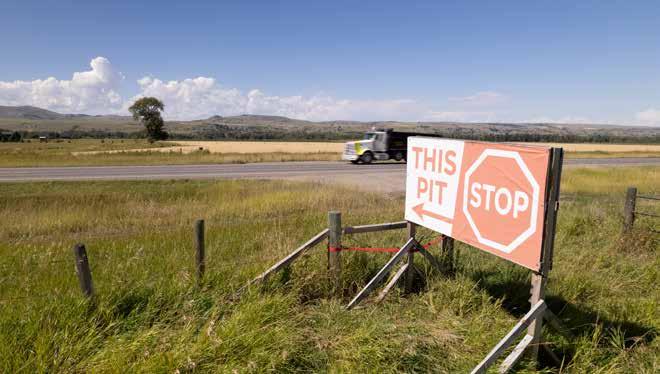 BY MIRA BRODY
BY MIRA BRODY
GALLATIN GATEWAY—Bayard Black reaches down to rub a wheat stalk between his fingers in the field beside his home in Gallatin Gateway. It’s a Roundup-resistant crop on land the Black family leases out, and borders a span of alfalfa, an irrigation ditch and a grass-covered berm with faded tire tracks running down the middle. This 130-acre parcel is just a portion of the land before the mouth of Gallatin Canyon that’s been in his family for five generations.
“Look,” he says, pointing between the tall grass at a group of birds. “Hungarian partridges. ‘Huns,’ I think they call them.”
Despite the mechanic hum of U.S. Highway 191 nearby, the landscape is teeming with wildlife: sandhill cranes peer over tall grasses, the Gallatin River glistens just down the hill, the Spanish Peaks shed morning clouds as the fall day warms. About a mile north is a wooden clock tower marking the heart of the community: a community center, school, post office and gas station.
Gallatin Gateway, an unincorporated community of just over 800, is at the fulcrum of Bozeman and Big Sky’s unyielding growth. Amid the strain, the gravel pit that would sit in the wheat and alfalfa field we’re standing in, is under the magnifying glass.
The pit of the present
The Black Gravel Pit was proposed in May 2023 by TMC Inc., a Belgrade-based sand and gravel company. The proposed 130-acre site would operate in four separate parcels at less than 40-acres each. Each parcel would operate for approximately five years beginning in the summer of 2024. However, the high demand for gravel would make the pit’s lifetime much shorter, explained Ken Stoebel, general manager of TMC.
Black said the pit would consume less than 4% of his property, and override the field of the Monsanto-developed GE wheat, a crop he fears is the cause of his father’s leukemia, and alfalfa, which can cause digestive issues for locally grazing elk. TMC originally approached the Black family in 2016, but the initial pit proposal didn’t pan out due to its proximity to the mouth of the canyon. This location, Black explains, is a better fit, and the income would provide an avenue for his family to keep their property.
“From the money we make we’d be able to invest in the ranch,” Black said. He cites rising property taxes as his latest hurdle. “That’s kind of the thing right now, is as a rancher you’re not ever creating enough income to do things like what your grandfather did. For me it looks like an opportunity to invest back into the property.”
Black took the farm over from his father six years ago, moving back to Montana from a life and business in Minnesota. With his father’s health ailing, Black took up ranching with his children, which he calls a “really holistic, beneficial, healthy lifestyle.”
“I was in love again,” he said.
The Black Gravel Pit would feed development projects across both Madison and Gallatin counties, west Bozeman, throughout Gallatin Canyon including Big Sky and further south along the border of Yellowstone National Park dependent on demand, Stoebel explained in an interview.
It’s a project that has soured neighbors.
Tracie Gibbons, president of the Gateway Conservation Alliance, was one of 30 residents notified of the Black Gravel Pit due to their halfmile proximity from the site. A resident of Hawk Hill Road since 2019, the proposal concerned Gibbons and she gathered the majority signatures in opposition needed to request a public meeting with the Department of Environmental Quality. That meeting took place on July 25.
“The biggest thing is protecting what we know and love about Gallatin Gateway,” Gibbons said in an interview.
The pit motivated her to establish the GCA, a nonprofit that addresses environmental issues impacting the community and brings to light the health and safety concerns the Black Gravel Pit would pose. Some of these, she said, include its proximity to residents and its byproducts including silica dust, noise, traffic and impact on water quality and availability. The safety of her community, she asserted, is at risk.
The GCA hired three lawyers that specialize in land use: Kim Morrison, Rob Farris-Olsen and Graham Coppes; as well as a hydrologist, David Donohue. They’ve organized a Facebook group, fundraising efforts and educational events that reach beyond the gravel pit and addresses Gateway’s future.
Gibbons said she’s “incredibly disappointed” by her commissioners during the pit proposal process. She feels Gateway has become the “dumping ground
and sacrificial lamb” for growth in the area.
“There’s a clear message that we want to keep hammering: the Gallatin Conservation Alliance is not against opencut mines,” Gibbons said. “We’re not against businesses, we’re not against growing the economy. We’re against the opening of this mine because it is close to the community and close to water. We care about the health and safety of people, we understand gravel is a need, but you don’t have to put it in the middle of a community.”
The conflict between the GCA and gravel pit developers is not unique, and the ease at which these projects occur can be traced to a bill that passed during the final hours of the 2021 Montana Legislature.
Zoning Gateway
Montana’s Opencut Mining Act was passed by the 2021 Montana Legislature during their transmittal period, in which legislators quickly pass nonrevenue bills. House Bill 599 removed a number of environmental requirements for the establishment of “high and dry” opencut mines. If a mine has no impact on ground or surface water and is away from populated areas, they’ll likely be approved for operation. The purveyor of the bill, Rep. Steve Gunderson, of Libby, Montana, cited the state’s infrastructure needs as his motivation for expediting the mine operation process.
Nick Banish, district manager for the Gallatin Local Water Quality District—the organization that monitors ecologic and hydrologic conditions along a network of around 60 wells and 17 surface water sites across the district—called it a “ hurried approach.”
“The legislation and the governor right now, they seem to be taking an approach that maximizes potential development and maximizes things like, let’s provide the goods and services that developers need to get this place modernized and running at full steam,” Banish said in an interview. He was
present as a resource at the DEQ’s July 25 meeting. Although the Opencut Mining Act still requires gravel pits to comply with local zoning laws, Gallatin Gateway is currently un-zoned, a solution the GCA is pushing for.
On Aug. 15, the GCA and the Black family attended a Gallatin County Commission meeting that included an agenda item about the Black Gravel Pit. During that discussion, commissioner Zach Brown recalled “frustration, fear and anger” from pit-opposers. The commission, Brown explained, doesn’t actually have a decision point in the issue, and he emphasized that the process is frustrating by design.
Should the commission implement interim zoning—an emergency measure that can be taken when public health, safety, morals or welfare are at stake—Black’s property would remain unfazed. Although the intent to eventually incorporate the community is a conversation, Brown said, “that takes a long time and that doesn’t address the shortterm fires that people are upset about.”
Brown also feels it’s notable that a republican legislation passed the Opencut Mining Act that allows for this and similar projects to take place, a political party Gallatin Gateway residents historically vote in favor of.
“I empathize with those concerns. I think there are real impacts,” Brown said. Born and raised in Gallatin County, Brown said his father lives near a pit and often echoes the complaints Brown has been hearing about this project. “But on the other hand, we all use gravel every day. Every time you drive on a gravel road or street or walk on a sidewalk, you use gravel. It’s the foundation of everyone’s home in Gallatin Gateway.”
The long game for the commission is zoning, something Brown has been advocating for since he was elected in January 2021. But the community is divided on that topic, a stance commissioners learned from stakeholder interviews while updating the Gallatin Gateway Community Plan.
“For all the people who have wanted us to zone Gateway yesterday, there’s an equal number of folks who are against zoning,” Brown said. “[The commissioners] think zoning is the best place to provide for the future, but we have to tread thoughtfully and carefully, and a lot of people who are angry with us are making broad assumptions that their opinions are shared by their neighbors.”
In the interim, the pit comes down to HB 599, which the commission does not have the standing to challenge in court. The public however, does.
“People who have standing to challenge the law are those who live in Gallatin Gateway,” Brown said.
Community impacts
“The last thing that canyon needs is more trucks,” said Stoebel, who resides in Gateway.
Anyone who lives in Gateway, or is the one of 9,000 daily commuters, would be hardpressed to disagree. The singular route between Bozeman and Big Sky, U.S. Highway 191 is dotted with over 100 white crosses marking traffic fatalities in the narrow, busy and weather-prone corridor. Adding more trucks to this route is of high concern for many in the region.
He said the Black Gravel Pit is not going to add any more traffic to this corridor. In fact, he’d be “willing to bet” that there will be fewer trucks on the route since the location allows for shorter round-trips. He also takes pride in TMC’s “safe, up-to-date fleet [of professionals] on the road.”
The proposal requires a northbound left turn lane, as well as a southbound acceleration lane to and from the site, a cost TMC would be responsible for, confirmed Dave Gates, district preconstruction engineer with MDT.
“We met with MDT, we did our traffic study, and the plan we promised exceeded MDT’s recommendation for a turn lane and acceleration lane,” Stoebel explained. He said TMC additionally petitioned for the speed limit to be lowered through Gateway. He also hopes for the option of running trucks at night under special conditions such as highway construction projects, to offset highimpact traffic situations.
Traffic isn’t the only issue raised by opposition. Silica dust, wells and the quality of the neighboring Gallatin River have been penned in comments to the commission and DEQ.
Opencut mining can create dust, some of which may leave the site boundary, the DEQ explained in an email to EBS. Dust from crushing operations are regulated under TMC’s Portable Facility Air Registration through DEQ’s Air Quality program and all opencut mining applications are reviewed by the DEQ to ensure compliance with Montana law, specifically the Opencut Mining Act. Stoebel confirmed that crushing will take place Monday through Friday between the hours of 7 a.m. and 6 p.m. and that dust would be managed with spray bars. The pit will include the construction of berms, an “acceptable Best Management Practice for controlling and directing stormwater,” the DEQ statement explained on this topic.
“The magnitude of a storm that could carry runoff from the proposed site to the Gallatin River approximately 2,500 feet away would be quite significant,” the statement continued.
TMC has mined throughout the Gallatin Valley, Stoebel said, and never impacted a local well. Pending results from two new monitoring wells that help determine the depth of the surrounding water table, he explained, the pit will adhere to a 10-foot buffer from that determined depth, a rule all of their projects follow.
Nick Banish confirmed that the silica levels in the area were “on par with what you’d expect to see” and added that silica is a required component in bioprocesses in river food webs, occurring throughout the Gallatin.
“When I talked to the DEQ I looked at the existing gravel pit well that we have and … nothing seems to leap out off the page to me as far as water quality results,” Banish said, referring to the Morgan Pit a few miles north of the proposed
Black Gravel Pit. “Nor was there a substantial decline in water well levels. It looked like regular Gallatin Valley water.”
For Stoebel, it all comes down to the reality of resources.
“We need the resource,” Stoebel said of gravel. “Our community continues to grow so how are we going to manage and feed this growth? How are going to supply the materials needed? The overall growth plan for the county is for 200,000 people, so if the county has forecasted that kind of growth we need to be thinking about where the resources are going to come from.”
Across the two parcels of land owned by the Blacks—the Bottom Black Ranch, where his house and proposed gravel pit site lies, and Reeseplace closer to the canyon’s mouth where he drives cattle—Bayard Black said he still comes across relics from generations past. There’s a field of old cars and scrap piles of iron from when his grandfather stockpiled materials through the uncertainty of the Great Depression.
“They always had to innovate,” Black said. “You’re always looking for ways to survive.”
This was on his mind as he reviewed TMC’s proposal. Over the 152 years they’ve owned their land, his family has come up with creative ways to keep it. He’s not keen on a federally-funded conservation easement—he says his family has never taken a farm subsidy—and likes the idea of flexibility for future generations as well as workers benefiting from local employment.

Of his opposers, he appreciates their shared love for the land.
“So many people are so passionate, really, I get it,” Black said. “I understand and I don’t have anything against people’s concerns. Most of them are really valid. What I have found is that it seems like people have weaponized these ideas and scared the s*** out of everybody and no one has any actual proof or record of those things happening [in TMC’s projects].”
The Black Gravel Pit proposal includes a reclamation bond of close to $1.4 million, Stoebel said, that would restore the pit’s operation site to an area that matches the native landscape, a vision that also aligns strongly with Black’s. The practice of reclaiming an opencut mine after its lifetime is “pretty common,” he said; there’s an example of it along Cottonwood Road, where another TMC gravel pit once operated.
Taking a left back out of Black’s property back onto 191 toward Bozeman is treacherous task. Commuters, tourists and semi-trucks whizz in either direction, eager to close the gap on their travel time. A row of condos, year-old Yellowstone Club employee housing, obscure the horizon to the east. While rapid population growth is unarguably felt in Bozeman and Big Sky, here it can be witnessed in swift, unstoppable force.
Black sees his land both granularly and long term. A photographer, he captures the things that make Gateway special each day, from a family of grouse, snow-capped Spanish Peaks, a herd of elk grazing in a sea of gold. His ability to see a longer vision is a quality he attributes to his family’s history as ranchers.
“I’m a longterm optimist in life, and in general,” Black said. “There’s still lodgepole posts on corrals that I fix that my grandpa had cut and brought down. I’m benefitting now from what was done 100 years ago.”

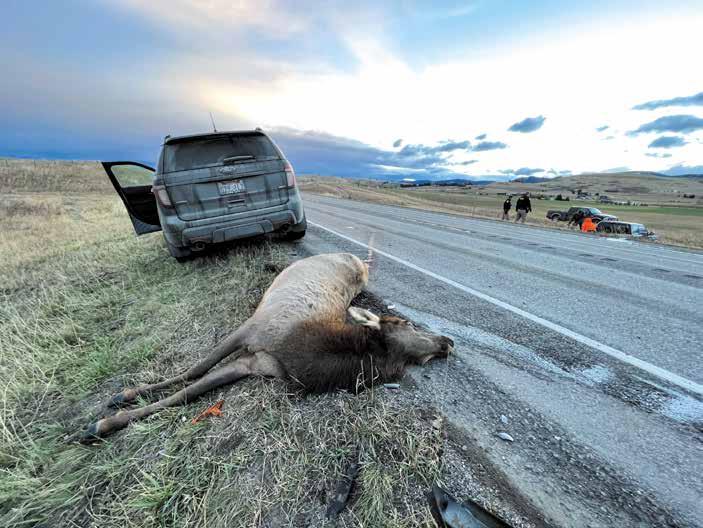

As the human presence between West Yellowstone and Four Corners (west of Bozeman) expands, so has the number of wildlife-vehicle collisions, according to a new report.
On Sept. 28, the nonprofit Center for Large Landscape Conservation published a long-awaited study with recommendations to reduce wildlifevehicle collisions—and improve wildlife habitat connectivity—on U.S. Highway 191, and Montana Highway 64 (Lone Mountain Trail) in Big Sky.
The report outlines 11 “priority sites” for projects to improve driver and wildlife safety, such as overpasses and underpasses, culverts, animal detection systems, traffic-calming measures and fencing. CLLC partnered with Montana State University’s Western Transportation Institute to conduct the two-year study, also summarized in a two-page flyer.
The 164-page US-191/MT-64 Wildlife & Transportation Assessment explored “options to improve traveler safety and maintain wildlife movement in a gateway to Yellowstone,” as summarized on its website.

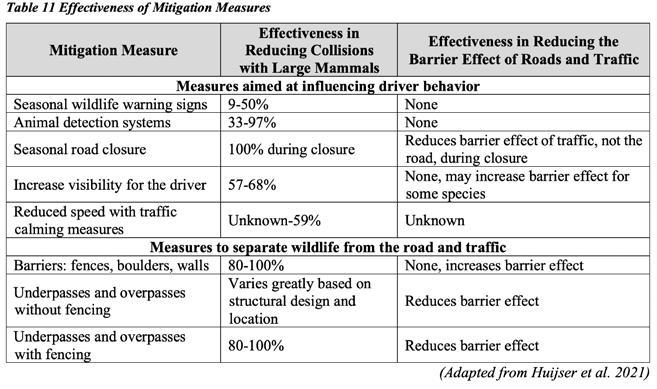
Locations for potential road improvements are described in the report, and ranked by priority:
Gallatin Gateway to Spanish Creek (page 87*)
Tie: Porcupine Creek (page 79) and “North of Big Sky entrance” (page 84)
Specimen Creek to Bacon Rind Creek (page 70)
West Fork Gallatin (page 96)
Tie: Taylor Fork (page 75) and Teepee Creek (page 66)
Four Corners to Gallatin Gateway (page 93)
“Upper Big Sky connectivity area” (page 99)
*Page numbers represent the PDF file. Subtract 16 for page numbers printed on the report.
Between 2011 and 2020, the Montana Department of Transportation and Interagency Grizzly Bear Study Team documented 1,322 animal carcasses between West Yellowstone, Big Sky and Four Corners. The report estimated more than $27 million in associated personal injury and property damages, and more than $60 million “if the passive use value of wildlife—which includes the ability of species to remain on the landscape—is included,” according to a Sept. 28 press release from CLLC.
Along the 37 miles between Beaver Creek in Big Sky and Four Corners, MDT data shows that wild animals are involved in 24% of all reported crashes.
“That’s nearly five times the national average,” CLLC Road Ecologist Elizabeth Fairbank stated in the release.
Fairbank described this section of U.S. Highway 191 as a “significant safety risk” to humans and wildlife and noted that the busy road fragments habitat.
“As the road’s traffic volume continues to increase, animals are less likely to be able to cross the road safely, increasing collision risk and reducing the ability of wildlife to move freely to access the resources they need to thrive and survive,” Fairbank stated in the release.
The research team studied a variety of factors between vehicle-wildlife collisions, and animal habitat and migration needs. The end goal was to identify sites for roadway improvements benefiting drivers and animals. The study also examined the potential of a “barrier effect,” which could prevent fish from passing through 53 culverts beneath both highways.
“Upsizing culverts to improve fish passage can provide co-benefits for other wildlife as well as make infrastructure more resilient to extreme weather events and high stream flows,” the release stated.
Beginning in late October, researchers will host three “Community Information Sessions” to discuss the report in Big Sky, Gallatin Gateway and West Yellowstone. The sessions are not yet scheduled.
“Together with elected officials and public agencies, area communities will determine how to act on the assessment’s findings. If they choose to pursue wildlife accommodation measures, they could apply for federal funding through various programs, including the Wildlife Crossings Pilot Program, a competitive grant program continuing through fiscal year 2026,” the release stated.
As infrastructure design and implementation can take five or more years, the report outlines shorterterm options—implemented in two to five years— and longer-term solutions at each site.
“This is an important first step in a long process. It is going to be a multi-year effort involving many different partners,” Fairbank stated. “There is no quick fix but, in the end, a variety of measures put in place over time will make these roads safer for travelers and wildlife, while improving habitat connectivity.”
Understanding the problem
Last fall, EBS contributor Ryan Strother spoke with local landowners and activists, and state and regional wildlife officials about the rise in collisions between elk and vehicles.
Part one of that series describes the increasing problem on U.S. Highway 191 in Gallatin Gateway. Part two explores how vehicle-elk collisions are intertwined with development, hunting and other challenges around highway solutions.
Part three outlines what’s blocking solutions for animals needing to cross the highway, and for drivers needing to avoid dangerous and costly collisions.
The three-part series is available on explorebigsky. com, and can be found by searching “Elk Crossing”.
NEW STUDY IDENTIFIES 11 LOCATIONS BETWEEN BOZEMAN, BIG SKY AND WEST YELLOWSTONE THAT MAY BENEFIT FROM INFRASTRUCTURE INCLUDING OVERPASSES, UNDERPASSES, CULVERTS AND FENCING.



The U.S. Forest Service announced Wednesday that it has tentatively approved a land swap involving more than 15 square miles of land located in two Montana mountain ranges.
The Custer Gallatin National Forest in an email announced that it is moving forward with a slightly modified version of the East Crazy Inspiration Divide Land Exchange, a proposal several years in the making.

In the draft decision notice, the Forest Service landed on a modified version of the proposal that the agency released for public comment last November. If the updated land swap ultimately goes through, 6,110 acres of land currently under private ownership would be transferred to the Forest Service. The agency would in turn pass 3,855 acres of national forest to private ownership. In addition to the Forest Service, the transaction would involve five landowners in the Crazy Mountains and one in Madison County—the Yellowstone Club, a luxury ski resort and residential community. The swap also includes components dealing with trails, trailheads, conservation easements, deed restrictions, and water, grazing and mineral rights.
In a release, Custer Gallatin Forest Supervisor Mary Erickson said she’s excited to announce the potential trade.
“Since the close of the comment period last December, the Forest Service has been working diligently to address concerns to put forth the best exchange possible,” Erickson said. “This release initiates a 45-day objection period for those who have standing based on previous involvement. I encourage people to take the time to review materials on the Forest [Service]’s website to understand the draft decision.”
The Forest Service said the proposal will increase the total number of acres under federal ownership and consolidate checkerboard ownership patterns, thereby protecting parcels of Forest Service land intermixed with private land from development. It highlighted pieces of the swap that establish access to Crazy Peak for Crow tribal members seeking to visit land of spiritual and historical importance. Other access pieces of the proposal the Forest Service underscored include the improvement of the Big Timber Canyon Trailhead, the acquisition of Smeller Lake and the trail leading to it, and the construction of a new trail to be named the Sweet Trunk trail, which would replace the East Trunk Trail.
East Trunk Trail is currently located mostly along federal land but lacks recorded easements on some sections of private land. The Yellowstone Club, the private landowner most impacted by the proposal in Madison County, would pay for the construction of the new trail, which would stretch about 22 miles as it winds from Sweet Grass Canyon to Big Timber Canyon.
The East Trunk Trail is one of five trails that inspired a lawsuit between public access advocates and the Forest Service in 2019. Plaintiffs in that suit, including Friends of the Crazy Mountains and the Montana chapter of Backcountry Hunters and Anglers, argued that the Forest Service has succumbed to pressure from politically powerful landowners over the past several years in its decision to walk back earlier attempts to defend access to those trails by removing threatening signs and locked gates.
Last year, federal judges in Billings sided with the Forest Service that it was within its discretion to alter its approach to managing historical trails. The plaintiffs appealed that ruling and a hearing before the U.S. Ninth Circuit Court of Appeals is scheduled for Oct. 17.
The Forest Service in the release highlighted some changes it made to the swap in response to comments from the public. To address concerns that the Forest Service is surrendering more acres that include surface water or wetlands than it gains, the agency tweaked the proposal to retain more acres that contain wetlands. That includes 200 acres of Forest Service land that encompass 50 acres of wetlands along the Crazies’ eastern flank, which “also preserves access to Sweet Grass Creek,” according to the agency. Additionally, another five acres of Forest Service land that include wetlands in the portion of the swap closer to Big Sky will be retained. That boundary shift also “retains lands that are important to the Big Sky snowmobile community and retains more of the Eglise Rock Overlook Trail,” according to the Forest Service.
Another new development surrounds conservation easements. Four parcels of land in the Sweet Grass drainage will be placed under a deed restrictions agreement to be monitored and enforced by the Sweet Grass County Conservation District. Those parcels couldn’t be subdivided into parcels smaller than 160 acres, mined, or developed for oil or gas extraction. Grazing, recreation and vegetation management would be allowed. Three parcels of land near the Inspiration Divide trail located in Madison County would be put under a conservation easement barring residential development but allowing for skiing and ski resort structures and improvements.
When the Forest Service unveiled the swap last November, it received an outpouring of public interest, with a variety of individuals and groups weighing in at public meetings and through the online public comment portal. Residents of several south-central Montana counties weighed in, as did environmental groups, motorized-use advocates, hunting and fishing groups and local business owners. In total, 1,078 people responded during the 45-day public comment period.
It’s not clear how many commenters supported the proposal outlined by the agency in November and how many opposed it. Asked for that information, Custer Gallatin Public Affairs Office Marna Daley said the agency does not count comments for or against a proposal.
The swap was initiated by the Yellowstone Club, which has long sought access to Forest Service property adjacent to its existing holdings in order to expand its offerings for expert skiers. The Yellowstone Club started working with landowners in the Crazies in 2019 to put together a land swap package that would address some areas the Forest Service had identified as being high priorities for that kind of resource-intensive real estate transaction.
The Crazy Mountain Access Project, which includes representation from conservation and recreation groups as well as agricultural producers who own land in the Crazies, was borne out of that effort. Crazy Mountain Access Project forwarded a proposal to the Forest Service for consideration in July of 2021, which formed the heart of the proposal the agency released for public review last November.
Crazy Mountain Access Project member and Yellowstone Club vice president of development
Mike DuCuennois said in an emailed statement that he appreciated the Forest Service’s commitment to soliciting and incorporating public comment on the proposal, which he said would result in “even greater access to quality public lands in both the Crazy Mountains and the Madison Range.”
“As a lifelong Montanan and avid outdoorsman, I know the significant role that our public lands play in our way of life and local economies,” DuCuennois said. “We are proud to be one of many groups working on this effort to increase access to public lands.”
Nathan Anderson, a rancher from Melville and member of Crazy Mountain Access Project, said in an emailed release that the exchange “is a positive path forward to solving the access issues that have plagued this region for decades.”
“The dialogue and trust that has been created between these entities throughout this process has been invaluable and sets a wonderful example for future projects,” Anderson said.
Friends of the Crazy Mountains founder Brad Wilson took a different view. He said he has difficulty taking the Forest Service at its word and has concerns about the lower parcels of Forest Service land entering into private ownership.
“All of the landowners who are part of this say this is a good swap. If that is the case, then we should give them the rocks and peaks and we will keep our lower sections, as they are abundant with natural resources that many of us use [for] our winter meat as well as wood for our stoves,” Wilson said.
He also argued that the trail proposed for the eastern flank of the range — the Sweet Trunk Trail — will not benefit hunters, hikers and backpackers given its steepness, and that the removal of an access point in Sweetgrass Canyon will funnel even more people up Big Timber Canyon, resulting in an influx of traffic on a moderately improved gravel road.
John Sullivan, chairman of the Montana Chapter of Backcountry Hunters and Anglers, said his group is still reviewing the proposal but is disappointed in its initial review, particularly given the loss of “historic legal public access to high-quality lands and waters.” He likened the Forest Service’s willingness to pursue the proposal to recent criticism that the Flathead National Forest has done the bidding of POWDR, a Utah-based group seeking to expand Holland Lake Lodge.
“Just as the USFS did at Holland Lake, the [Lewis and Clark-] Helena National Forest and other forests throughout Montana, this proposal slants heavily in the favor of the special interest, the politically wellconnected, the wealthy ski resort developers and adjacent landowners blocking legal public access. In this case, it is the Yellowstone Club as opposed to POWDR, but the principle remains the same.”
INVOLVING MORE THAN 15 SQUARE MILES
LANDOWNERS DREW MORE THAN 1,000 PUBLIC COMMENTS.Fairview Mountain in the Crazy Mountains. PHOTO COURTESY OF ECOFLIGHT VIA MONTANA FREE PRESS
On Sept. 14, Ryan Busse entered the Montana gubernatorial race as a Kalispell Democrat. Busse, a former firearms executive and campaign advisor for President Joe Biden, announced in a campaign video, “My Montana is a place where hardworking people make a living for themselves [and] raise their kids with equal opportunities.”
The video included his family, two of which have been placed in the national conversation as plaintiffs in the historic youth climate trial, Held v. Montana.
Explore Big Sky spoke with Busse to learn more about his gubernatorial race and how he would lead the state.
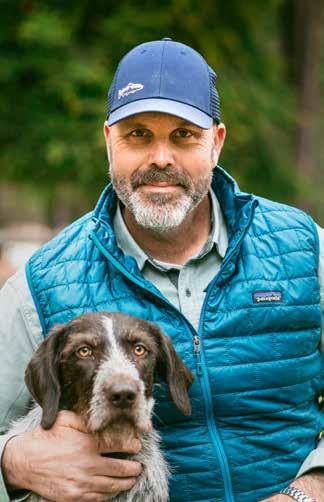
Explore Big Sky: So, what do you think is special about Montana?
Ryan Busse: Oh, boy.
So a bit of a story: When I was a young boy my father would often tell me stories about a trip that he took to Montana in 1964. Those were literally my bedtime stories. He had some friends when he was in college and [he] toured through the state, you know, slept on the bank of the Jefferson [River] and heard elk bugle and all this stuff. So these were my bedtime stories about how magical Montana was.
I then spent a good part of my early years up until I was about 20 just dreaming about Montana and figuring out how I could get here. And I did. In 1995, I moved here. Since then, I can't even count the ways in which Montana has made me better. It's really exceeded what I thought a dream could be. That started for me in the Badger-Two Medicine, a place that I consider very sacred, and then has expanded to so many other parts of the state from a natural standpoint, and the people, amazing people, and friends that we have in Kalispell. We’ve lived there now for almost 30 years and raised our family there and have friends all across the state in Missoula, and Bozeman and Havre. And so, I just love the place.
EBS: That’s awesome. So Two Medicine, that's a place that's really important to you.
RB: The Badger-Two Medicine, it's important enough that we named our second son Badge after the Badger-Two Medicine.
EBS: So you're running for Montana governor, what do you think is unique about this upcoming race?
RB: I think we're in the middle of an existential crisis in Montana. I'm very fearful of what the current administration is trying to turn this place into. It's making it very difficult for working people. It's upending the sort of backbone that I consider essential to Montana. It’s weakening our public schools, definitely threatening to weaken or amend our constitution or 1972 constitution. And in a weird, creepy way going after freedoms, like women's health care freedoms. The sort of intrusion into people's personal lives is something that is not in any way part of the Montana that I think of as special.
We are faced with a choice of, are we going to allow those things to happen? Are we going to be like some repressive state that isn't special, isn’t the last best place? Or are we going to be the last best place? I think it's time to choose.
EBS: So I think you've touched upon this a little bit, but what decisions has the Montana legislature made that really disappointed you?
RB: Look, for the most part—not to say there weren't a few good things, and I'll get to those— but many of the things that came out of the state legislature this last session, and the sort of vitriol that came out of it was an embarrassment. It was an embarrassment nationally.
The few good things that did pass, I'll give you an example, like Senate Bill 442, which was a bill that was passed with overwhelming Republican support. Then [Gov. Greg] Gianforte vetoes that, and it's a conservation bill and it funds maintenance of rural roads and so the stuff that came out, he vetoed.
EBS: So from what I understand some of those key issues that you're looking to address as governor are housing, gun control, public school funding and environmental conservation. Is that correct?
RB: Yes. So I'm not really unconcerned about radicalization in and around guns, but I'm not proposing or running on any gun control issues.
I'm very worried about housing affordability. I think that tax—the way that the legislature took a $2.8 billion surplus and instantly spent it by basically giving away tax breaks to big corporations and wealthy people and then shifting the tax burden and settling every single homeowner in the state of Montana with a great big tax increase—I think that's just sort of part and parcel about how disdainful this bunch is about working Montanans and average Montanans.
So the tax thing is a central topic, because I think it's very illustrative about how detached they are from Montana.
EBS: According to data from a recent U.S. Census [Bureau data], 29% of households in Montana will spend more than 30% of their income on housing costs. Readers of Explore Big Sky would be really interested to learn about how you plan to tackle that issue. In Big Sky’s experience, we have issues with housing for the essential workforce and there’s similar challenges in Bozeman.
RB: I think that the property tax issue is very illustrative. The first thing that the government and the governor need to do is stop making things worse. And this tax policy that they heaped on us has made it way worse. Only about half of the homes qualify for this little one-time rebate that they're trying to shut everybody up with, whereas property taxes or permits are going to keep going up.
If the home was a rental home, it doesn't qualify for any tax rebate, meaning that the tax increase is going to hit renters right in the pocketbook. It's going to make this affordability thing way worse. It's going to drive up rental rates even more. And so in the middle of a very tight, if not near crisis, market for almost every working person, what does the Gianforte administration and the Republican supermajority do? They make it worse, way worse. If nothing else, we've got to stop doing that.
EBS: Montana is struggling to retain teachers. More than 50% of newly licensed Montana teachers will leave their jobs in the first three years. Can you tell me a little bit more about how you plan to tackle those vacancies and provide stellar education to kids in Montana who go to public schools?
RB: I grew up outside of a little town of 640 people, graduated with 16 other kids. All of us had the opportunity to attend some kind of secondary education… We all had great opportunities because of that. It was strictly due to our public education system in small towns.
And now we have the Gianforte administration doing everything it can to weaken and privatize that public education system. That is stressing our schools, our teachers. Our [entry-level] teachers are the lowest paid in the country. We have a $2.8 billion surplus and we still have the lowest paid teachers in the nation. That tells you all you need to know about how this administration values public education, and I place exactly the opposite value on it. I think it's central to our democracy and to the opportunity of our kids and I’m prioritizing it.
EBS: Absolutely. So we touched briefly upon gun control. You said that you're not running on any specific gun control plans or policies at the moment.
RB: That’s correct. I'm worried about radicalization. I've worked in the firearms industry for 25 years and I think the irresponsibility we've seen in and around the [Second Amendment] is very dangerous. I think it's largely a social norm thing and I think that responsible gun owners like me should lead by example and stand up and decry some of the irresponsible acts we've seen. But I'm not in favor, nor am I proposing any kind
of massive legislation. I'm basically calling on responsible gun owners to help us tamp down the irresponsible actions that we've seen.
EBS: What does the future of gun control for you in Montana look like?
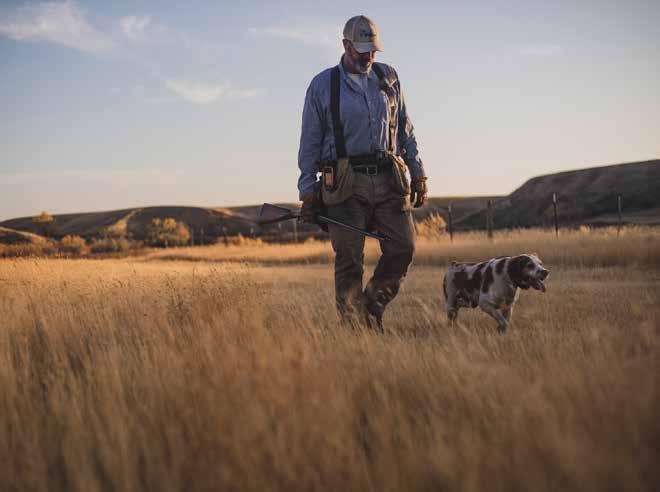
RB: I don't want it to be restrictive. And I think that means that if we're going to have a powerful right like the Second Amendment, which I appreciate and which I engage in. I was hunting a couple days ago, and hope to be hunting again soon. I own lots of guns and believe in defending myself. But we're going to lose all of our rights eventually if we let democracy come apart, because radicalized people abuse [rights].
It's incumbent on responsible gun owners to stand up and make sure that doesn't happen. We're the ones that care about maintaining our rights. And, frankly, that's the way to save our Second Amendment gun rights—it’s to be the responsible ones that protect them.
EBS: As for your past experience, maybe you could tell me about how working as an advisor to the Biden administration's 2020 campaign motivated you to shape the future of Montana?

RB: I've been an advisor to lots of groups, including the Biden campaign. As with a lot of things, there were a lot of good things that I learned… and there are some frustrating things. Generally speaking… I don't think [coastal Democrats] quite connect with the kind of rural culture that I grew up in, and the sorts of things that are often important to Montanans. And despite being proud of working on that campaign, I also had the frustrations of not always being heard.
Understanding that rural issues could be messaged to and people could be messaged to and met in a little better way. And that's part of what being a good advisor is about. So I enjoy the process, but it's not…. like I'm an uncritical fanboy. I try to be constructive and stand up for Montana folks. That's what I was there for.
EBS: So a lot of the time you were kind of speaking for rural communities more because you have experience with that?
RB: Not a lot of time—all the time.
EBS: Where have you spoken on your campaign?
RB: I spoke at Rocky Mountain College [in Billings] last night. I was in Helena at an event
[the night before]; really awesome, packed house— unbelievably energetic event. I was in Butte the night before that.
I guess the theme here is that I've been shocked and touched and heartened about the outpouring of support and the energy that is around the campaign. I'm still worried and frightened about what the stage is going to be if we don't stand up and fix it, but a lot of people share my worries and they're excited about what might happen here.
EBS: Since we’re around one-year out, can you tell me about what your plan looks like before the election?
RB: One-hundred miles an hour. Meeting everybody in every corner of the state as fast as I can. I'm not shying away from any question or controversy or person…I want to meet everybody, and we plan on doing that. Speaking where I can and meeting people where they are, and making the case for why we need to make a change in the state. And I think people understand that.
EBS: I’m really curious to learn your leadership style. Maybe you can tell me about how you plan to lead Montana and what style of leadership you usually take on?

RB: Well, everywhere I've been in whatever role I've been in, I've always had really a lead by example, and an open door policy. Everybody on my team is bought in. They believe in the larger mission. They believe in the importance of what we're doing. I don't ask anybody to do anything that I wouldn't do myself, ever. That's part of growing up on a ranch—everything is your job… there's no rank, you just pitch in and do it.
My leadership style would be that I would be proud and happy and thrilled to lead the government in the Last Best Place. And I'm not really sure we have a governor right now who’s very happy to do it and it doesn't look to me like he's having much fun being the governor… but it's really important that it should be pretty damn fun to be the governor of Montana.
EBS: Thank you so much for finding some time, Ryan. We wish you the best on your next campaign stops.
RB: We’ll see you in Big Sky [soon]. You guys take care.






Longevity. It’s a term that many are discussing, analyzing, critiquing and even attempting to master in our current world. There are podcasts, Netflix documentaries, support groups, supplement companies and plenty of books and websites dedicated to the subject of how to live a quality and healthy life into old age.
One of the current experts on this subject is Dr. Peter Attia, who, alongside Bill Gifford, wrote the New York Times Bestseller, “Outlive: The Science & Art of Longevity.” His book and modern philosophies for living a longer and better life are the subject of Big Sky’s first Book Club.
A partnership between the Big Sky Community Organization and the Big Sky Community Library, the idea for a book club came out of discussions between Eileen Coil, recreation and wellness director for BSCO, and Erica Oglevie, library coordinator at the Big Sky Community Library. The club meets every Monday at BASE from 10:30 a.m. to 12 p.m. to discuss Attia’s book while also partaking in one healthy activity as a group.
“It’s a fun way for Big Sky residents to read, connect and actively practice recommendations from Dr. Attia to live a long and healthy life,” Coil said.
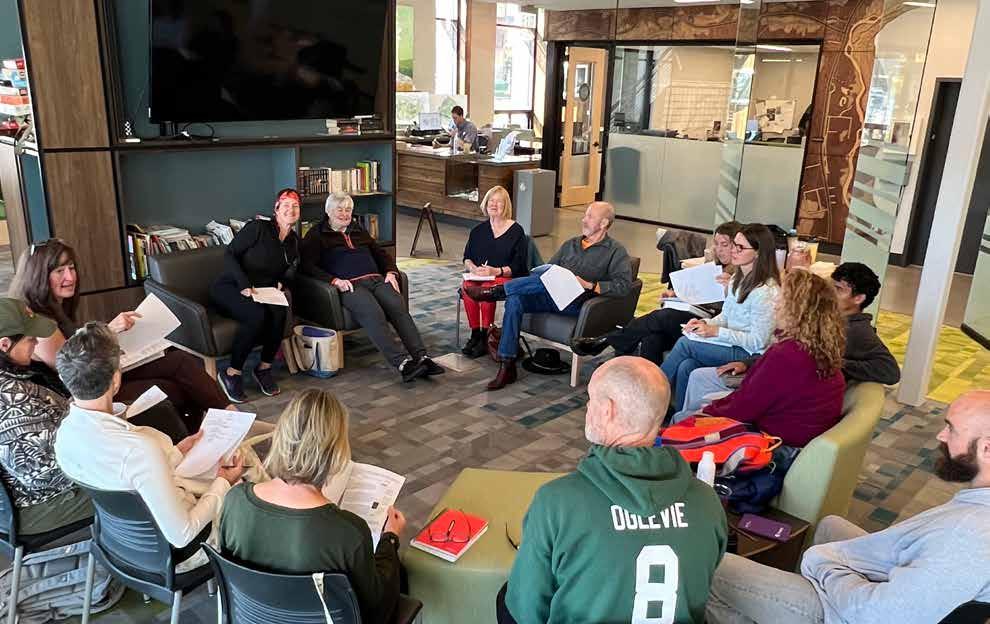
The goal of the first book club is to support community members on a healthy journey into old age through a book which many claim can be life changing when it comes to forming healthy habits and proactive choices at any age.
“It’s been great to see people in their 20s to 80s collectively discussing the book and then participating in tai chi, balance and cardiovascular techniques in hopes of staying healthy and strong,” Coil said.
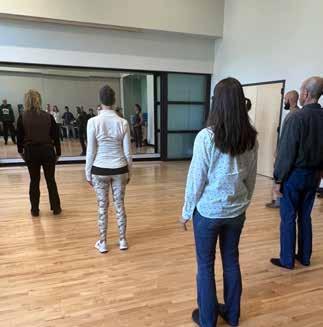
The group has discussed Attia’s book while also focusing on wellness topics that people of all ages and backgrounds are currently interested in.
The first week addressed strategizing an individual plan for being a centenarian in good health and advocating for your own wellbeing with medical professionals. The second week focused on building a body framework and the importance of stability and balance as we get older. The next two weeks will address good nutritional choices and metabolic health, and how to maintain good sleep habits and mental health into old age.
“The staff at the Big Sky Library are excited to experience the opportunity to take the library outside of our four walls and into the community,” Oglevie said. “I’m hoping to expand the wellness collection in collaboration with BASE and use BASE’s convenient and localized community space for other book clubs and more programming events in the future.”
Both Coil and Oglevie mentioned that all Big Sky residents are welcome to attend the last few sessions about the current book. They also hope to feature more books in the future that promote health, community and reading.
Big Sky’s Warren Miller Performing Arts Center is announcing its 11th annual winter season lineup. This year, WMPAC presents its signature mix of physical spectaculars, progressive music acts, sidesplitting comedy and returning favorites.
The traditional WMPAC winter season will present a blend of stand-up comedy, virtuoso musical performances, artistic athletic feats and storytelling in a range of genres and expressions. The first show will take place on Wednesday, Dec. 27 with Cirque-tacular.
“We like to kick off the season with a show that’s visually astonishing, and this group more than fits the bill,” said John Zirkle, WMPAC’s executive director.
Cirque-tacular is a collective of acrobats, aerialists and physical artists who put together a dazzling circus spectacular that is the perfect family entertainment for the holiday season.
This winter, WMPAC will also present two performances by exceptionally talented and
renowned classical music groups, the Danish String Quartet and Anderson & Roe. The former is a Grammy-nominated classical music quartet that brings unprecedented dynamism to the genre, and the second is a pair of duetting piano masters who went viral during the pandemic lockdowns for their creative performances from home.
Säje Voices is an all-female jazz vocal ensemble who earned a Grammy nomination for their very first song. They perform at WMPAC on March 2. Johnny Cash: the Official Concert Experience on Jan. 31 is an immersive visual and musical tour through the Man in Black’s career and catalog, featuring projections of Cash’s performances and a chorus of fantastically talented live singers.
WMPAC will also host two traditional comedy and storytelling events this season. Standup comedian Mike Birbiglia, whose smash hit book “Sleepwalk with Me” was a New York Times bestseller, takes the stage with his hysterically deadpan observations on Jan. 6. Fan favorite podcast “The Moth” will host its legendary Moth Mainstage storytelling event on Feb. 24.

WMPAC’s 11th season will end with two more performances that showcase the artistry in athleticism. Local favorite James Sewell Ballet returns on March 16 for the group’s 20th performance on the WMPAC stage. On March 31, 360 ALLSTARS presents their “supercharged urban circus,” showcasing the spectacular artistry that emerges from street culture.
Winter season packages and individual tickets are available at warrenmillerpac.org.
At First Security Bank, Totally Free Checking really is FREE! Free of minimum balances and hidden weekly, monthly, or annual fees. We also have three great interest-bearing accounts to fit your every need.

Thursday, October 5 - Wednesday, October 18
If your next event falls between Oct. 19 - Nov. 1, please submit it to
THURSDAY, OCT. 5
Community Week Workout: Winter Conditioning
BASE, 9 a.m.
Community Appreciation Celebration
Len Hill Park, 4 p.m.
Peer Support Drop-in Hours
Big Sky Community Food Bank, 4:30 p.m.
FRIDAY, OCT. 6
Restorative Yoga with Wendy
BASE, 10 a.m.
Big Sky Community Gear Sale
Fire Pit Park, 3-6 p.m.
All Levels Pickup Volleyball
BASE, 6 p.m.
Teton Gravity Research: Legend Has It
The Waypoint, 7 p.m.
SATURDAY, OCT. 7
Adult 3 v. 3 Basketball Tournament
BASE, 10 a.m.
Big Sky Community Gear Sale
Fire Pit Park, 12-8 p.m.
All Ages Pickup Basketball
BASE, 4 p.m.
Volleyball: Lone Peak vs. Manhattan (Senior night)
Lone Peak High School, 2:30 p.m.
Teton Gravity Research: Legend Has It The Waypoint, 7 p.m.
SUNDAY, OCT. 8
St. Joseph Mass
Big Sky Chapel, 8 a.m.
All Saint Big Sky Service Big Sky Chapel, 10 a.m.
Sunday Service
Soldiers Chapel, 11 a.m.
Big Sky Christian Fellowship Service
Big Sky Chapel, 4:30 p.m.
MONDAY, OCT. 9
BASE & Community Library Book Club
BASE, 10:30 a.m.
Holistic Emotional First Aid Santosha Wellness Center, 3 p.m.
Free English Classes for Spanish Speakers BASE, 7:30 p.m.
TUESDAY, OCT. 10
Wine and Dine Tuesdays Rainbow Ranch Lodge, 5 p.m.
American Legion Off-Season Bingo Riverhouse BBQ & Events, 5:30 p.m.
Big Sky School District Board Meeting Ophir Elementary School, 3:45 p.m.
WEDNESDAY, OCT. 11
Community Art Class: Paint your Pet Fall 2023 BASE, 6 p.m.
Trivia
The Waypoint, 7 p.m.
THURSDAY, OCT. 12
Small Business Virtual Round Table Big Sky Chamber of Commerce (Remote), 11 a.m.
Football: Lone Peak vs. Sheridan (Junior High only) Lone Peak High School, 4 p.m.
Pickleball Open Play
BASE, 6 p.m.
All Levels Pottery Session (continued)
BASE, 10 a.m.
FRIDAY, OCT. 13
Pickleball Open Play
BASE, 4 p.m.
French Bordeaux Dinner
Rainbow Ranch Lodge, 6 p.m.
Karaoke
The Waypoint, 9 p.m.
SATURDAY, OCT. 14
Fall Baking Class at the Montage
The Montage Hotel, 2 p.m.
The Silhouettes
Warren Miller Performing Arts Center, 4 p.m.
All Ages Pickup Basketball BASE, 4 p.m.
Zach’s Cocktail Class
The Waypoint, 7 p.m.
The Silhouettes
Warren Miller Performing Arts Center, 7 p.m.
SUNDAY, OCT. 15
St. Joseph Mass
Big Sky Chapel, 8 a.m.
All Saint Big Sky Service
Big Sky Chapel, 10 a.m.
Sunday Service
Soldiers Chapel, 11 a.m.
Arts Council: Life Drawing Fall
BASE, 1 p.m.
Arts Council: Collaging for Fall

BASE, 3 p.m.
Big Sky Christian Fellowship Service
Big Sky Chapel, 4:30 p.m.
MONDAY, OCT. 16
BASE & Community Library Book Club
BASE, 10:30 a.m.
Storytime
BASE, 10:30 a.m.
TUESDAY OCT. 17
Big Sky County Water & Sewer District Board Meeting
Big Sky Water & Sewer District, 8 a.m.
Big Sky School District Board Meeting
Ophir Elementary School, 3:45 p.m.
Wine and Dine Tuesdays
Rainbow Ranch Lodge, 5 p.m.
American Legion Off-Season Bingo
Riverhouse BBQ & Events, 5:30 p.m.
WEDNESDAY OCT. 18
Community Art Class: Paint your favorite place
BASE, 6 p.m.
Trivia
The Waypoint, 7 p.m.
FEATURED EVENT: COLLAGING FALL 2023
Sunday, Oct 15, 3-4:30 p.m.
This class hosted by the Arts Council of Big Sky and instructed by Cezia Costales will inspire creativity, sustainability and relaxation through art. Costales’ artwork features upcycled materials, playful vibrant colors and she works to inspire others to express themselves through unique mediums. Classes are taught in English and Spanish and participants don’t need to have a BASE pass and instead give a suggested class fee.
Season-spanning, all-conditions gear built to outperform and outlast.


EMBRACE THE ELEMENT™

Sun Protection
Water Resistant
Quick Drying
Moisture Wicking
Pagosa Springs, CO
Bozeman, MT
HOODIE



NorthWestern Energy’s Eric Cheney started with NorthWestern back in 2007 as a Journeyman lineman. Today, the Gallatin Valley native serves as the Big Sky town manager, ensuring the electric system in and around Big Sky is maintained and operational. He calls it a “rewarding and demanding job” and comments that Big Sky a unique grid to work with. At the end of the day, it’s all about keeping the lights on for local residents and businesses.
This series is part of a paid partnership with the Big Sky Chamber of Commerce. The following answers have been edited for brevity.

Explore Big Sky: Eric, let’s start with some questions about yourself: when did you first move to the area and what brought you here?
Eric Cheney: I was born and raised in the Gallatin Valley. As my work led me to Texas, Alabama and California, it was always my goal to get back home to Montana to raise my family. I love the small town feeling of Montana and spend a lot of time outdoors fishing, hunting, camping and skiing.
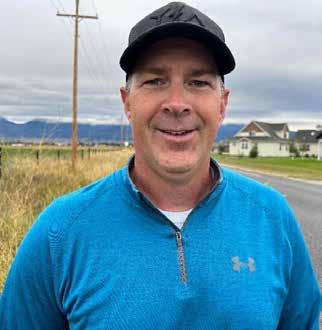
EBS: When did you join NorthWestern Energy?
EC: I came on board with NorthWestern energy in May of 2007 as a Journeyman lineman. In 2017 I accepted a crew foreman job in Bozeman and then accepted the Big Sky Town Manager position in 2019.
EBS: What is your background in and what drew you to the company?
EC: I have been a lineman for 18 years and I love my job. Every day provides a different challenge or opportunity. I particularly enjoy working on NorthWestern’s 500 kV bare hand crew. NorthWestern Energy partners with other utilities from across the country in owning and maintaining the two 500 kV lines that run from Colstrip to the West Coast. This line is a major piece of the western grid for the U.S. The 500 kV crew is made up of 16 journeymen linemen from all across Montana. We work using both “bare hand” and “hot stick” methods, which allows us to safely do our work with the line energized to ensure no energy interruption.
EBS: As the Big Sky town manager, what is your primary role within the community?
EC: As the Big Sky town manager I help build and maintain the electric system in and around
Big Sky. It’s both a rewarding and demanding job given how unique the Big Sky area is and how critically important it is to keep the lifts powered up and the lights on in our local businesses and hotels.
EBS: What is the best thing about working in the Big Sky service area, especially with other local business owners and members of the community?
EC: I love being in Big Sky! Sometimes I have to slow down, take a look around me and appreciate how remarkably beautiful the area truly is. Interacting with members of the Big Sky community and business leaders, and working with developers on larger projects, make my job enjoyable. I am a member of this year’s Leadership Big Sky cohort and look forward to learning even more about the community and making some new friends along the way.
EBS: What are some important things the community of Big Sky should know about their utility provider?
EC: NorthWestern Energy has made significant investments in Big Sky and our planning teams have worked hard to keep abreast of the growth to anticipate future needs. In the last 10 years, NorthWestern Energy has invested more than $80 million in Big Sky. The Jackrabbit to Big Sky transmission project completed in 2016, upgraded the 69kV line to 161 kV. Additional upgrades were made to the substations at Meadow and Lone Mountain and then in 2020 a third
substation, known as “Midway” was constructed in the mid-mountain area after a lengthy community involvement process. These upgrades have more than doubled our capacity to serve Big Sky and have improved reliability for residents, area businesses and visitors and allow for future demand growth.
EBS: What are some exciting projects NWE is working on to serve the Montana area—maybe such as renewable resources, any energy saving program for residents, etc.?
EC: NorthWestern is using new technology in Big Sky with smart switches metering. Smart switches have communications to the cabinet itself and when the switch senses a fault it will open and isolate the fault, then close in from a different feed. This minimizes outage times and improves reliability. All this can be done while the lineman is still in route.
At NorthWestern, we understand that almost everything we do to produce and deliver energy to our customers impacts the environment. With every business decision at NorthWestern, from the planning of new transmission lines to the licensing requirements of our hydroelectric plants to evaluating the impacts of new energy resources being added to our supply portfolio, we consider the environmental consequences. Our Environmental Policy establishes that we will provide cost-effective, reliable and stably priced energy while being good stewards of the natural resources and complying with environmental regulations. Already today, more than half of our electric generation companywide comes from carbon-free sources. We have programs and resources available for customers on our website (NorthWesternEnergy.com).
EBS: What else should the Big Sky community know about NWE?
EC: NorthWestern Energy is a partner to Big Sky as it continues to be one of the fastest-growing areas of Montana. The average electric demand growth rate in Big Sky over the past five years, 7.8% annually, is nearly eight times the amount of the entire Montana electric growth system. The significant commercial and residential growth in Big Sky means that the demand for electricity and natural gas is increasing, and NorthWestern Energy will be there every step of the way making sure that the community of Big Sky is prepared today and into the future.












Wh y is the RiverView communit y housing being built so close to Spur Road?
The River V iew housing project is addressing a critical demand by providing much-needed accommodation for workers in the community The available land for the development poses some challenges due to its narrow size, and the ultimate goal in design was to maximize the space for housing units. As a result, the current site will accommodate a total of 336 single-occupancy bedrooms spread across six buildings, in addition, the Housing Trust is building 50 bedrooms fur ther west. The location of River V iew has great livability and trail connectivity, quick access to Town Center and easy access to the river To enhance the overall appeal, the exterior finishes will have a modern mountain aesthetic. We understand the and the residences

Have we considered re -routing traffic away from Ousel Falls road to bypass the current Town Center activit y?
We are continuously working on improving transpor tation options and road infrastructure, and this is a high-priority in our Town Center planning. The ongoing Tiger Grant work, despite the challenges experienced this summer, will significantly enhance
land remaining for development in Town Center and much of what remains is prioritized for residential uses, commercial uses and community uses, including parks and trails. Ousel Falls Road will remain the vehicular thoroughfare through Town Center into the future
What is the future of the Big Sk y PBR, will there always be an arena in Town Center?
The PBR will be back in Town Center for 2024. Looking beyond next year, we are working with Outlaw Partners and others to consider appropriate venues for events in Town Center and throughout the Big Sky area

Do the private Clubs pay Resor t Tax?
Yes, Yellowstone Club, Moonlight Basin, and Spanish Peaks Mountain Club all collect Resor t Tax from members and guests. These entities collect and contribute millions of dollars annually to Resor t Tax, all of which is reinvested in the Big Sky community
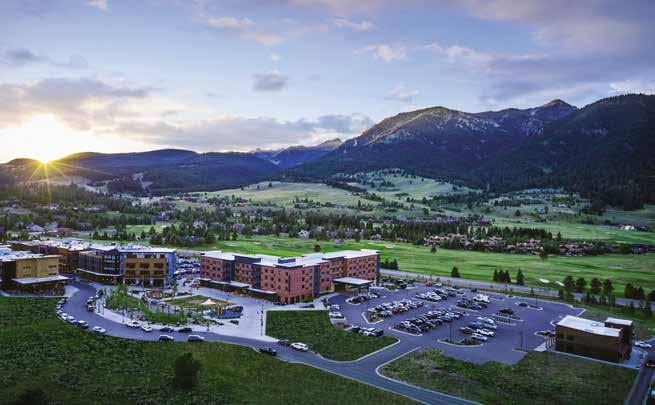



Has Lone Mountain Land considered addressing the public in-person, with an open forum Q&A?
There will be numerous oppor tunities to ask LMLC questions and have open discussions at Community Week. Be on the lookout for more information from the Big Sky Chamber and the Resor t Tax

I love fall. I love the crisp air. I love the return of the rain after the long hot summer. I love watching leaves change color. I love people who let me jump in their leaf piles (hint, hint).
I do not love pumpkin spice lattes.
Starbucks introduced the pumpkin spice latte in 2003, and in the last 20 years the drink has been elevated to icon status (as much as a latte can be an icon). The PSL is the coffee giant’s most popular seasonal drink. Aside from an IPA, what other drink is so readily known by its acronym?
According to Starbucks, the pumpkin spice latte “combines Starbucks Signature Espresso and steamed milk with the celebrated flavor combination of real pumpkin, cinnamon, nutmeg and clove.” It is available hot, iced or blended and topped with whipped cream and more warming pumpkin pie spices.
I have had more PSLs in researching this column than I have probably consumed in the rest of my life. Still, when the king of the PSL puts out the call to queue for fall drinks, I get in line.
Why? Well, because even though I think adding pumpkin and spice to a latte doesn’t make it better,
I have recently been introduced to cold foam. And adding pumpkin cream cold foam to cold brew coffee does make it better—a hell of a lot better.
Cold foam, for the uninitiated, is simply a frothed blend of milk (or some combination of milk and cream) with sweetener. It sits on top of the drink like hot foam on a latte, or can be blended in to the drink. If you are a do-it-yourself-er, Starbucks’ website has a recipe for the Sweet Pumpkin Spice Syrup (athome.starbucks.com/recipe/pumpkinspice-cold-foam) that is the base of its cold foam.
Throughout September I settled into somewhat of a routine, treating myself to a giant Starbucks cold brew every week. Then a friend raved about the Iced Pumpkin Cream Chai Tea Latte, the new starting player in Starbucks’ fall lineup. The concoction was based on a popular secret fall menu customization. I had to try it. I loved the way the pie flavors blended with chai flavors. I loved the sweet spice on spice goopy madness. I didn’t look at the calories—this is spooky season, but that information seemed a bit too scary.
I was happy, settling into a basic fall existence with oversized sweaters and pumpkin spice everything but lattes, when an Explore Big Sky editor questioned my coffee choices. There has to be something better than Starbucks for fancy fall beverages, he said.
I asked around. I was writing this piece in Studio Coffee Roasters in Bozeman, which makes its own pumpkin spice blend. I even ordered a PSL. I wasn’t satisfied.
Caliber Coffee Roasters in Big Sky busts out the flavorings when the weather shifts, among them, pumpkin spice, brown sugar cinnamon and caramel apple pie. Most coffee houses and huts have similar fall options. It wasn’t enough. I needed cold foam.
Finally, I remembered Mazevo Coffee. The Montana-based roasting company was started out of a Billings garage in 2016. There are now four Billings locations, one in Four Corners and two more slated for Laurel and Missoula. And Mazevo’s menu is filled with specialty drinks, from smoothies to signature seasonal flavors.
Would it be able to sway me from Starbucks? A side-by-side comparison was in order. I ordered the pumpkin spice cold brew from each place and added the Starbucks Iced Pumpkin Cream Chai Tea Latte and the Apple Pie Oat Milk Latte from Mazevo, on the recommendation of the barista.

I do not recommend such a comparison. The chai was candy next to the subtle apple pie flavor of the Mazevo latte. The Mazevo cold foam was creamier, the coffee richer. To say I’m swayed is an understatement. There was really no competition. Maybe I’ll see if Mazevo can change my opinion on the PSL next. ‘Tis the season.
Rachel Hergett is a foodie and cook from Montana. She is arts editor emeritus at the Bozeman Daily Chronicle and has written for publications such as Food Network Magazine and Montana Quarterly. Rachel is also the host of the Magic Monday Show on KGLT-FM and teaches at Montana State University.







Heading into autumn is a great time to think about how you can support your physical and mental well-being. Colds and cases of the flu are more common now as people start spending more time indoors due to shortened daylight hours and cooler temps. Here are some of our favorite holistic fall health ideas.
An odd title but a powerful immune boost. If you feel you’re coming down with a virus or are around those who have been feeling unwell, grab a pair of cotton socks, a pair of wool socks and a comfy blanket. Run the cotton socks under cold water and wring them out, or even put them in the freezer for a few minutes to ensure they’re extra cold! Put the cold socks on with dry, wool socks on top, then wrap yourself up nice and warm for a nap or keep the socks on overnight. Wake up with a boosted immune system!
Most root vegetables are available all year, but they’re at their peak from fall to spring. Underground gems such as garlic, onions, ginger, turnips, carrots, sweet potatoes, beets, and parsnips deliver ample flavor and nutrients during the cooler months. Many root vegetables are
loaded with folate, which is key for cell growth and metabolism, and beta-carotene, which aids vision and bone growth. Great in soups and stews!

With the sun going down earlier in the evenings, you may feel more sleepy than usual. Don’t resist that feeling! Since we get less light in the fall and winter, our bodies start to crave more down time. Getting adequate sleep is important for your body and can help you stay healthy throughout the colder seasons. Consistent sleep strengthens the immune system, allowing for balanced and effective immune function.
The cooler weather and shorter days may have you wanting to bunk at home, but making time for your social life will help support your emotional and physical health. Positive interactions with our friends and family boost dopamine, oxytocin, and serotonin levels in the brain, which are neurotransmitters that can help reduce feelings of stress and anxiety. Feeling more relaxed and happier contributes to improved mental health.
Acupuncture for all around wellness
If you’re searching for your ultimate wellness this fall, look no further than acupuncture. According to traditional Chinese medicine, autumn is linked with the lungs and large intestines. These control your immune system and help to keep your energy and wellness up during the fall. Acupuncture also helps clear your mind, releases depression and grief, and regulates hormone
balance and sleep. In addition, acupuncture can help clear sinuses and support a stronger immune system. Create cellular health with vitamin C
It’s probably not a surprise—Vitamin C is one of the leading vitamins for immune support. It is essential for the optimal functioning of white blood cells and also supports the production of the important B and T cells of the adaptive immune response. It also helps certain cells of the innate immune system surround unwanted compounds. Vitamin C is easy to find in many foods, such as leafy greens, colorful peppers and citrus fruits.
Harness the sun with vitamin D
When fall arrives, we have less daylight exposure so it's important to either take a supplement or eat a varied diet in order to maintain appropriate vitamin D levels through fall and winter. Salmon, tuna, mushrooms, plain greek yogurt and egg yolks are good food sources of vitamin D. It can be difficult to get enough from diet alone so many people consider winter supplementation. Embrace the beauty of the changing seasons while keeping your health and wellness at the forefront. Stay warm, stay healthy, and enjoy the season to its fullest!
Dr. Kaley Burns is a licensed Naturopathic Physician providing a wide range of services for her clients, including: Naturopathic Medicine, IV Nutrient Therapy, Regenerative Injections, Rejuvenation Therapies, Vitamin Shots, and Nutrition Counseling. She embraces a natural approach to health and aims to similarly inspire and guide others on their health journey.















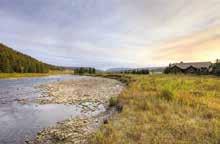



3
Listed

This exceptional horse property sprawls across 134 acres within the Springhill Community, nestled at the foot of the western slopes of the Bridger Mountain Range. Conveniently situated just under 20 minutes from downtown Bozeman, the KB Ranch stands as a unique and unparalleled equine and recreational haven, brimming with boundless possibilities. Its remarkable features encompass a magnificent 72'x180' indoor riding arena, complemented by a vast 250'x120' outdoor riding arena. The property boasts a 6-stall barn, accompanied by 15 loafing sheds, solidifying its status as the epitome of a Springhill Equine Paradise.



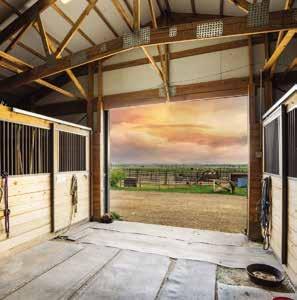
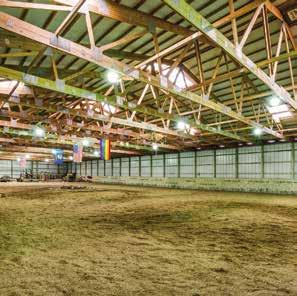
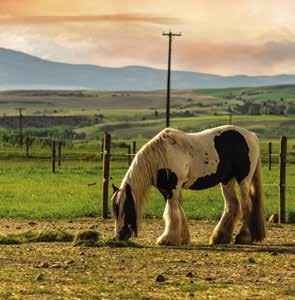


Years ago, two friends and I were hiking in the far northwestern corner of Glacier National Park. It was early November. Western larch trees were in full molt with butterscotch yellow robes draped and marching across hillsides and ridges west of the Continental Divide. Their needles gingerly fell from towering trees and lined the trails like a golden-brick road. The forests were luminous conifers brighter than sunshine at this time of the year as the sun was slipping to its southern house in the sky. There was no brush, as lightning struck the ground periodically and thinned the understory. The trunks of the trees were blackened and seasoned by fire’s regularity.
We were deep in conversation when I looked over my shoulder and saw a beautiful black wolf with goldenyellow eyes trotting along behind us. We stopped as the wolf continued along off-trail. She went within 10 feet of us. Something transpired between us as she stared into our souls, and we stared in awe at this preternatural opportunity. She leaned back on her haunches, marking some tall, tawny grass with her scent before continuing around us and slipping over the ridge out of sight. Some howls in the distance greeted her, she reassured them we were no threat, and she and the moment were gone.
Many people hear the word “wolf” and think of Yellowstone National Park’s reintroduction efforts and blame the federal government for trapping and releasing Canadian wolves into the states, but this is only part of the story. Recovery started decades before federal government agents reintroduced wolves simultaneously in Yellowstone National Park and Idaho’s Frank Church—River of No Return Wilderness in the winters of 1995 and ’96.
Yes, the Yellowstone story received the most headlines from the media and spoke the loudest. But the true story came in on long legs and giant paws as one or two wolves stole silently across the Canada-U.S. border to northwestern Montana in the late 1970s and early ‘80s, with barely any journalists covering it. They recolonized the Lower 48 states mostly by their choice and free agency.
Historically, northern gray wolves ranged from the Pacific Ocean to the Atlantic and from Mexico to the Arctic. During the “Manifest Destiny” period, settlers and fur traders hunted them to near extinction with guns, poison and steel. Now, they have made comebacks to Montana, Idaho, Oregon, Washington, Wyoming, California, Colorado and northern parts of Minnesota, Michigan and Wisconsin—but they still inhabit less than 10% of their former range. Wolves have traveled like spokes from the hubs of Glacier, Yellowstone and Idaho.
In 1978, wolves were listed as threatened under the Endangered Species Act. Wolves began trickling, on their own, across the Canadian border into northwestern Montana in the late ‘70s and early ‘80s. The first western wolf to be collared was a female in 1979 called Kishinena. At the time, wolf ecologists and University of Montana biologists began seeing her tracks in the snow accompanied by a larger male who only had three toes on one paw, probably caught in a trap. Kishinena’s radio collar died, but people continued seeing a wolf with a collar for the next year or so. These two wolves mated, then she denned just north of the Canadian border and had seven pups that April. Not long after, though,
her mate was inadvertently snared in a trap and killed. She successfully raised all seven pups by herself. Wolf Ecology Project personnel continued to see tracks of eight wolves the following winter roaming the Flathead Valley. Years later, the descendants of those pups formed the first known pack to den inside Montana’s Glacier National Park in the early ‘80s. University of Montana wildlife biologists dubbed this pack the “Magic Pack.” There had been no breeding population of wolves in Glacier National Park from the 1930s until 1986, although occasional dispersers were reported.
Wolves’ controversial nature
While a subset of wildlife junkies felt wowed by what the return of these creatures meant for this ecosystem, the storied love-hate relationship between humans and wolves goes deep and is long-standing; during the 19th and early 20th centuries, wolves had been extirpated from much of their historic range throughout North America by intensive human efforts and the Predator Control Program, now called Wildlife Services. Montana’s wolf eradication efforts were complete by the 1950s, although a few individuals were killed in the next few decades. In the ‘60s and ‘70s, occasional wolves continued to steal across the boundary from southwest Alberta and southeast British Columbia. The wolves and other large carnivores like grizzlies, wolverines, lynx, and mountain lions follow a vital and broad landscape corridor of animal migration called Yellowstone to Yukon or Y2Y, allowing them to travel from Alberta and BC along the northern Rockies into Montana.
If you’re a wolf trotting down the toward Montana, you’ll still need to navigate the “smoke a pack a day” bumper stickers on trucks along the way, as well as plenty of “shoot, shovel, shut up” scowls at the end of scopes. Fearing the big, bad wolf, Little Red Riding Hood comes in all sizes and genders. Many local ranchers have the above mentality when seeing a wolf around livestock. Some hunters hate wolves and might say they kill all of “our” elk. In actuality, what wolves do for elk is ultimately increase their health and population; wolves keep ungulates from sitting around and being lazy. The elk are now on the move and not overbrowsing vegetation, which has allowed vegetation to grow taller and conceal the elk and the wolves. Hunters must work harder to find elk that are on the move. Human impacts have also changed the landscape.
The first wolf studies focused on pack habits and behavior, their impact on the ecosystem, habitat, and anything else researchers could glean from this species that was anything but the big, bad wolf of old children’s fables. Many Montanans didn’t receive those scientific studies well.
In the 1990s, “Jane Goodall of Wolves” Diane Boyd helped lead many of these studies. She said in a recent phone call that “Most wildlife managers admit most wildlife management is about managing people. Montana FWP used to set the wolf quota in Montana to appease the wolf haters more than to cull the wolf population.”
Besides Glacier being a haven from humans for these wolves, the area had a few relatively mild winters in the years before the wolves returned, allowing prey populations to recover, including whitetail deer, elk and moose. Wolves don’t have an easy life and compete with humans, grizzlies, black bears, mountain lions, lynxes, bobcats and coyotes. Despite ample prey, the park staff and the public remained at odds about wolves. Changing the public's attitude has taken much longer and is still much work. The information gained by studying the wolves has helped impart ecosystem insights that make the wolf’s place in this region understood.
One fear of those who denounce wolves is that they’ll take over the landscape. Yet, understanding basic wildlife principles assures that if a wolf population rises too high for the ecosystem, the wolves subsequently die off of starvation and disease. Wolves keep each other in check. Wolf packs keep other wolf packs from growing too big, as well. Their territories can be 100 to 1,000 square miles and are based on habitat and available food. The same holds for elk or any other wildlife population. According to Boyd, the winter of 1996 was a big winter that killed over 40% of the whitetail deer population in northwestern Montana. That following spring, many wolf pups died of starvation. Nature has a way of checking and balances with all species.
Glacier National Park and the Lower 48 went quiet again, but not for long, as wolf howls returned to pour over the landscape.
Dispersal of these wolves in the '80s and '90s occurred in four cardinal directions: north to Canadian National Parks and beyond; others moved south to the Missoula area (Ninemile Valley, Montana), Idaho, and the Rocky Mountain Front near Augusta, Montana.
“Glacier Park was the first point of colonization,” Boyd explained. “People need to remember that before wolves were introduced, there were something like 70 to 80 wolves already in northwestern Montana and moving towards Yellowstone. Two wolves were spotted near Yellowstone in the early ‘90s, two years before the introduction. One wolf filmed in the Hayden Valley by [Bozeman videographer] Ray Paunovich, feeding on a carcass with a grizzly bear and coyotes. Another wolf was shot immediately south of Yellowstone, near Fox Creek/ Fox Park.”
These two wolves were the first in or around Yellowstone in over 60 years. Through DNA testing, biologists discovered that this wolf came from the Ninemile Valley, northwest of Missoula.
Seeing a wolf is an experience beyond magical, almost otherworldly, a gift. Within the years surrounding the return of wolves to Glacier, more and more people’s attitudes began to alter. More of the public began to trade out their idea of this animal as a devil for the realization that it belonged to, and was necessary to, the ecosystem's health. As the bumper-to-bumper traffic years after reintroduction in Yellowstone will attest to, people feel awe at the chance to see a wolf in the wild. Since the reintroduction of wolves in Yellowstone in 1996, tourism skyrocketed, with people going there to see or hear wild wolves in the Lamar Valley, Slough Creek area.
“People think of Yellowstone wolves as being incredibly special. All wolves are special. I want people to think if they really cared about those Yellowstone wolves, they should care about Glacier wolves, the Bitterroot wolves, or the Trego wolves,” said Boyd. “It’s a misguided passion because just because you can see and photograph the Yellowstone wolves doesn’t make them more special than other wolves in the state or elsewhere. All the wolves live the same life in the state of Montana. They are born, have challenges, and survive or don’t; if they survive and are lucky, they become breeders and shape the future of ecosystems, their pack structure, and the whole population. They’re all important.”
Benjamin Alva Polley is a place-based storyteller with stories published in Outside, Adventure Journal, Popular Science, Field & Stream, Esquire, Sierra, Audubon, Earth Island Journal, Modern Huntsman, and other publications at his website www.benjaminpolley.com/stories. He holds a master’s in Environmental Science and Natural Resource Journalism from the University of Montana.
This Firelight Chalet End Loft condo features a functional, open floor plan that is ideal for any buyer. Original owner and very lightly used, fireplace has never had a fire. Being sold furnished and turnkey, located just down the road from Big Sky’s popular and growing Town Center.


$1,149,000 #367306
RON SEHER 406-580-3363




Our service department ensures that our clients have an unforgettable experience. This team is led by a 16-year veteran and supported by team members with a heart for customer service.
Ryan Coombs Service Operations Director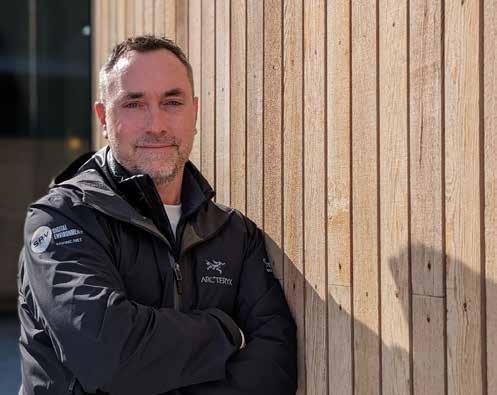

Ski-in/Ski-out condo with the ultimate location in Big Sky Resort’s main base area. The Summit Hotel has been completely renovated and this “Elbow Unit” has a commanding view of Lone Mountain, offers valet and room service, luxury resort ammenities and convenient access to full service restaurants, shops, bars.

$775,000 #379540

KIRK DIGE 406-580-5475
“SAV
• Identify strategies to improve the visitor experience while protecting a sense of place
• Explore future tourism scenarios

• Learn from proven practices in other destinations

• Develop strong connections with others in the tourism economy www.visitbigsky.com/tourism-industry/destination-strategy

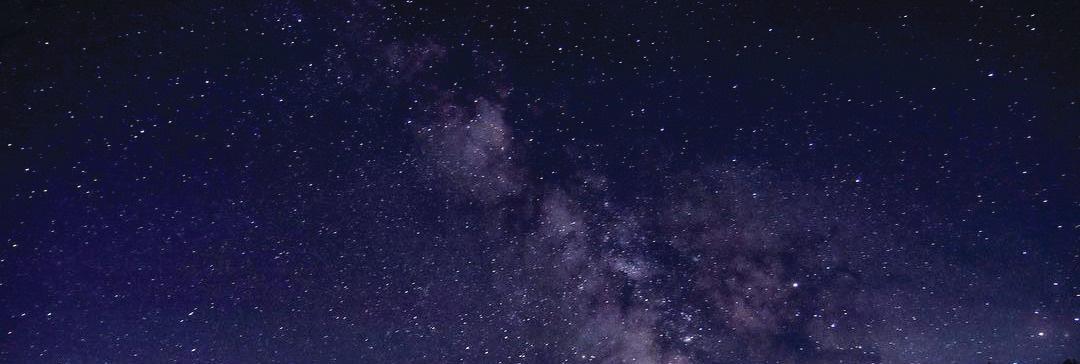



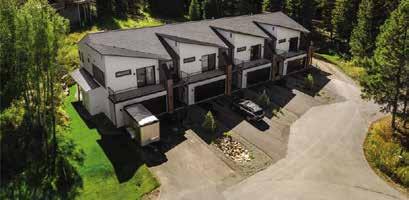



I remember the third date I had with my last girlfriend, now my lovely wife. I wanted to impress her with the beauty of fall in Montana. I knew that she had moved here from the Boston area, a region known for its incredible fall colors. Thinking that she might be missing home a little bit, I wanted to show her our local leaf displays, which are a bit more subtle.
It was the beginning of October and we had just gotten a fresh dusting of snow in the mountains, so we headed out for a hike. As we walked along the trail, we rounded a corner and faced an aspen grove in all its splendor; blazing yellow with touches of orange surrounded by the intense green of lodgepole pine frosted with new snow. I turned around to look at my new friend’s face and could see she appreciated it as much as me. She then bent a pine branch over and started eating the snow off of it like cotton candy.
“My kind of soul,” I thought.
Now, 25 years later, it's fall again and we love hiking around looking at the colors. It’s amazing how many different shades of purple, red, orange, and yellow we have here. Not only do the big trees and shrubs have gorgeous leaves, but so do the small plants like grasses and other vascular plants that have been growing all summer. You only have to walk as far as outside to see this transition of color happening. But why does the green of summer give way to the other colors this time of year? And why do pine, spruce and fir trees remain green?
Let’s start with why plants have green leaves in the first place. Hopefully you can all blurt out the answer together: Chlorophyll. This name comes from the Greek words chloros (green) and
phyllon (leaf). Yay, everyone paid attention to their teachers from kindergarten to college biology. But why is chlorophyll green?
Sunlight starts out “white” meaning it contains all the colors of the spectrum. When it hits a surface, what is reflected is the color we see, so the rest of the colors must be absorbed. This means chlorophyll in the plant absorbs the violet, blue, red, orange and yellow frequencies of light. It is these frequencies that are used in the process of photosynthesis to provide energy for splitting carbon dioxide and water molecules and recombining them to make the sugars plants use to store energy and grow.
During the growing season, chlorophyll is the dominant molecule in the plant’s leaves, but with the shortening of the days in fall, and cooler temperatures, chlorophyll in the leaf starts to degrade. As this molecule disappears, others get to take their time in the spotlight, or sunlight in this case.
First, carotenoids are a class of pigments found in plants that help prevent photodegradation. Basically the plant’s sunscreen, they also play a
minor role in photosynthesis. They are also used by plants as precursors of hormones in nonphotosynthetic organs, as antioxidants, and as color attractants in flowers, leaves, and berries. Carotenoids are yellow, orange, red and purple in color.

The second type of molecule that gets to express itself in the fall is Anthocyanin. This molecule is formed in leaves as the sugar concentration increases with the onset of fall. The colors of this molecule can be red, blue, purple and magenta. One might notice that some leaves start out yellow, and as the sugar content increases they change to orange then red. This is especially true in trees such as maple and oak, and in our region, we must look to our smaller plants such as dogwood, chokecherry and huckleberry.
But why do these leaves die off while evergreens get to keep their leaves? For a tree, it takes energy and water to grow and maintain leaves, and this energy comes from the sun. So as the daylight hours shorten into fall, there is not enough energy, or water, for deciduous trees to maintain their broad leaves. Also, when the temperatures go below freezing, water in the cells of the leaves form ice crystals that can lance cell walls and membranes, killing the leaves.
On the other hand, pine, fir, and spruce trees have needles with a waxy coating, small surface area to volume ratio, and resin and other chemicals that act as an antifreeze, so they can conserve water, not freeze, and continue to photosynthesize all winter.
So how do you fall? I suggest going for a walk with a friend or loved one and see how many different colors you can find. Don’t only look up at the big trees, but stoop over and look at the small wonders that produced incredible flowers in the summer and now produce lovely shades of autumn color.
Paul Swenson has been living in and around the Big Sky area since 1966. He is a retired science teacher, fishing guide, Yellowstone guide and naturalist. Also an artist and photographer, Swenson focuses on the intricacies found in nature.


 BY DANIEL BIERSCHWALE EBS COLUMNIST
BY DANIEL BIERSCHWALE EBS COLUMNIST

In Big Sky, the term ‘base’ is an important part of our everyday vernacular. We use it skiing, when dressing, meeting up, and building our community. A Capital Improvement Plan is a foundation, or a base, that will guide community investments in the upcoming years.
In the September Big Sky Resort Area District board meeting, contractor TischlerBise presented the draft Big Sky CIP to the public. As reported in EBS, this plan outlined investment funds with staggering dollar amounts. What do these forecasts mean and how do they impact the typical resident of Big Sky?
Capital improvements and CIP Capital improvements refer to major, nonrecurring physical expenditures such as land acquisition, buildings, public infrastructure and equipment upgrades. The voter-approved “1% for Infrastructure” invested in the new Wastewater Resource Recovery Facility is a great example of a recent capital improvement project.
Used by local governments to strategically plan for community growth, a CIP outlines proposed capital improvement projects, estimated costs, and expected funding over a multi-year period. A CIP takes a comprehensive look at the needs of a community and saves money by improving the cost effectiveness of how local governments expend their limited resources and dollars. It anticipates and prepares, rather than reacts.
Planners use tools like the U.S. Census and the G.I.S. database to establish a baseline for factors like population, housing and employment. Then they look at trends and projections to estimate future growth, then determine what additional infrastructure would be required to meet those needs.
The plan for Big Sky
The new Big Sky Community CIP covers a fiveyear and 10-year timeframe, concentrating on nearterm infrastructure needs. Its principal goal is to assess capital needs for service providers in Big Sky and provide guidance for funding, serving as the foundation for future decisions concerning the need for public services and facilities.
TischlerBise is the planning consultant that also prepared the previous CIP commissioned by the Gallatin Canyon/Big Sky Planning and Zoning District in 2011. That CIP unfortunately left out the Madison County portion of Big Sky. The 2023 CIP incorporates all areas in the BSRAD boundary—which spans both Gallatin and Madison counties—to provide a more comprehensive look at the needs of our community.
How much?
The draft plan identifies $777 million in infrastructure needs in the Big Sky community. It quantifies the demand for arts and education, economic development, health and safety, housing, public works, recreation and conservation needs through a detailed analysis of current and projected demand in addition to interviews with service providers. The CIP represents a significant investment; moving forward will require crosssector collaboration. This document initiates the planning process—it is a needs assessment.
The Big Sky CIP is a community plan, outlining funding strategies and existing public funding
sources including property taxes, resort tax, state and federal grants, and philanthropy. It also identifies potential funding mechanisms, such as targeted increment financing (TIF), utility fees, and debt service. To put it into perspective, resort tax collection in fiscal year 2023 totaled over $20 million, a large portion of which is used to pay for property tax offset and nonprofit grants. Even with all the funding sources of Big Sky to make our community livable, we will need significant public/ private partnership to make this happen.
Once the Big Sky CIP is accepted by BSRAD and both county commissions, the next phase will begin. This is a phase that involves budgeting and prioritization, the evaluation of funding options and a schedule for implementing projects. With the completion of the project schedule, the CIP would typically be adopted by resolution or ordinance after a public hearing—held locally by BSRAD. The formal adoption of the CIP permits the beginning of implementing the scheduled projects.
The capital improvements planning process takes substantial time and resources to complete. It will be a living document that will need to be updated regularly. In the end, we will have a strong base and path forward to investing in our community that will benefit future generations of Big Sky.
Daniel Bierschwale is the Executive Director of the Big Sky Resort Area District (BSRAD). As a dedicated public servant, he is committed to increasing civic engagement and voter education. Many ballot issues impact government services and public funding including subsequent property tax impacts. BSRAD is the local government agency that administers Resort Tax, which offsets property taxes while also funding numerous community-wide nonprofit programs.


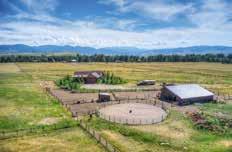


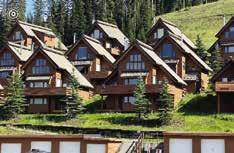








Conserving water is vital to the health of the Gallatin. Big sky receives less than 20 in. of precipitation each year, leaving us drought-prone. Learn 7 easy ways you can establish new habits in conservation, saving water #FortheRiver






